
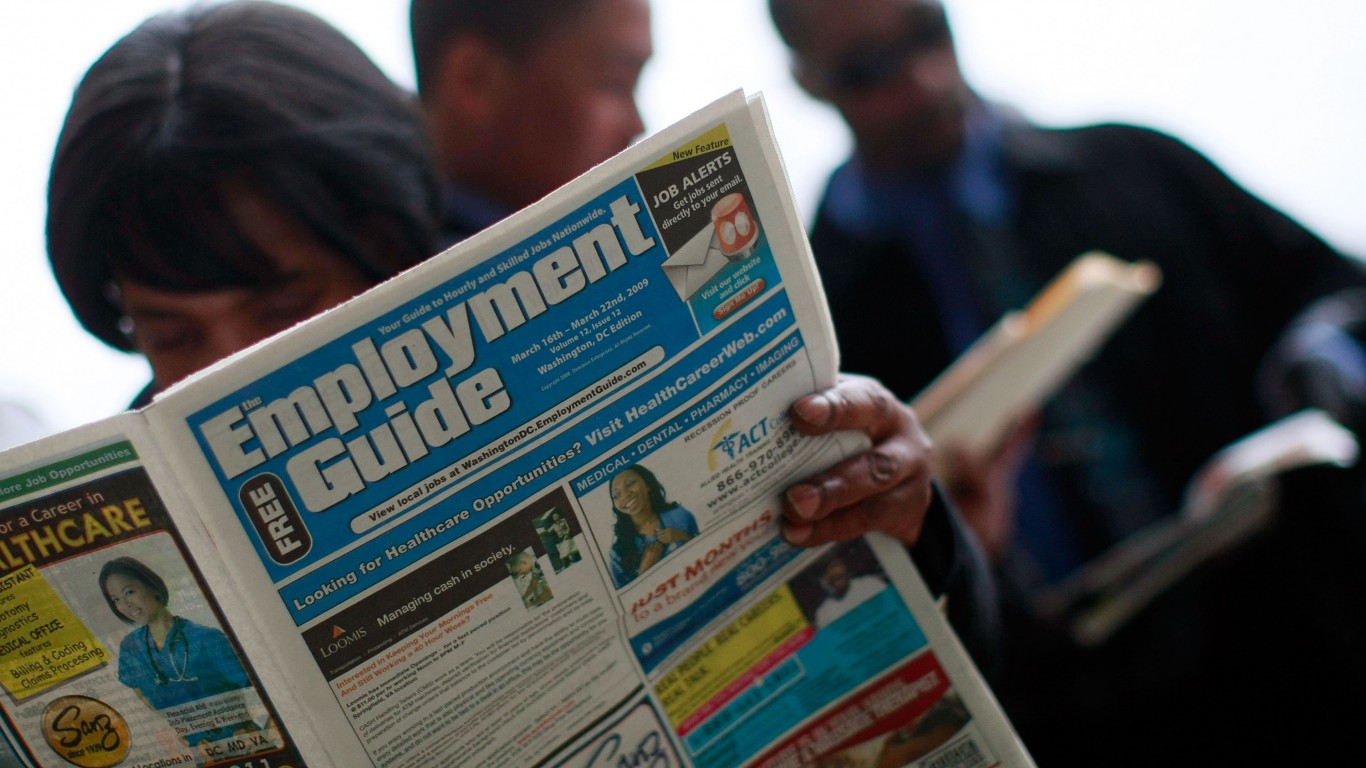
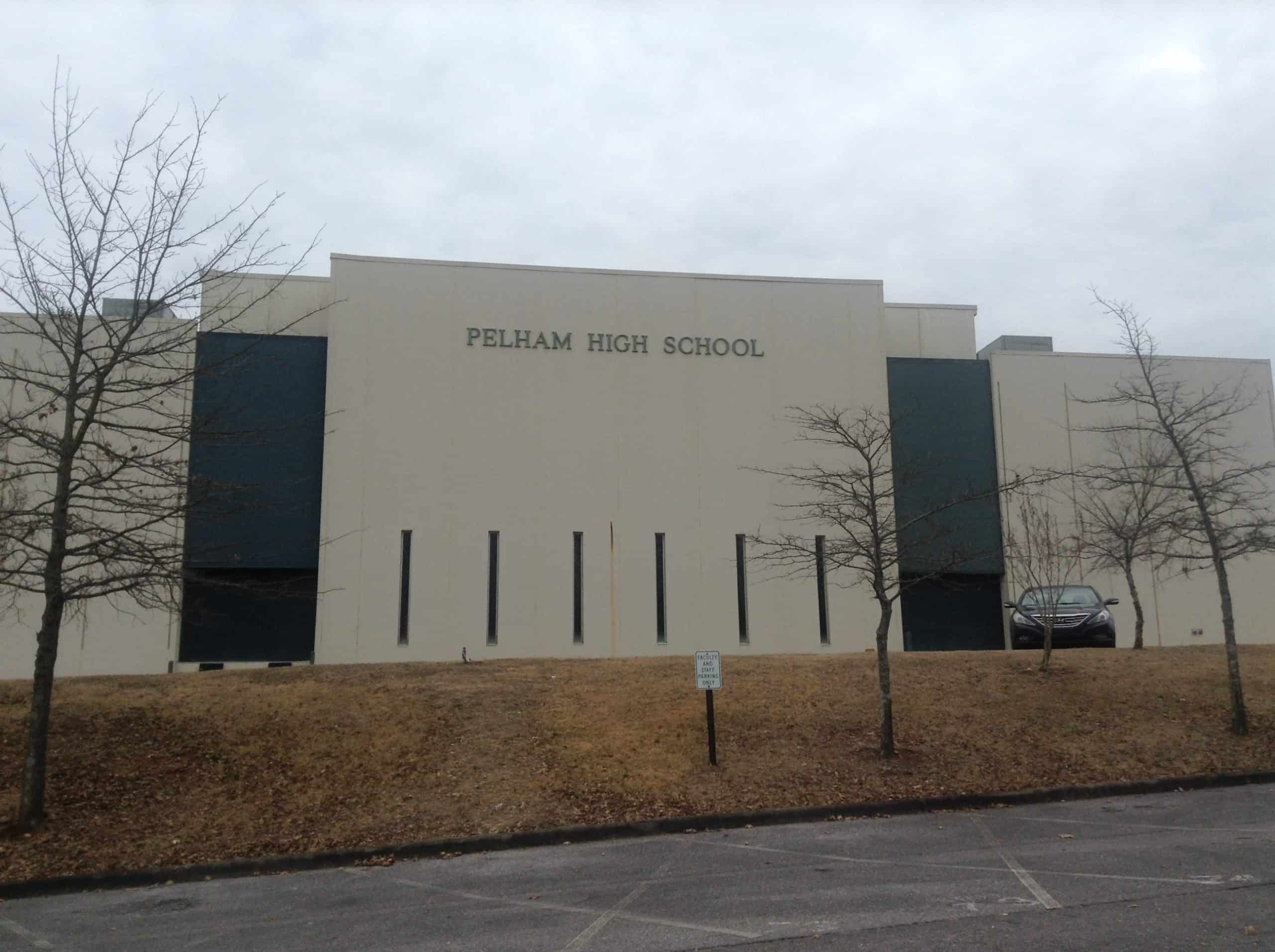
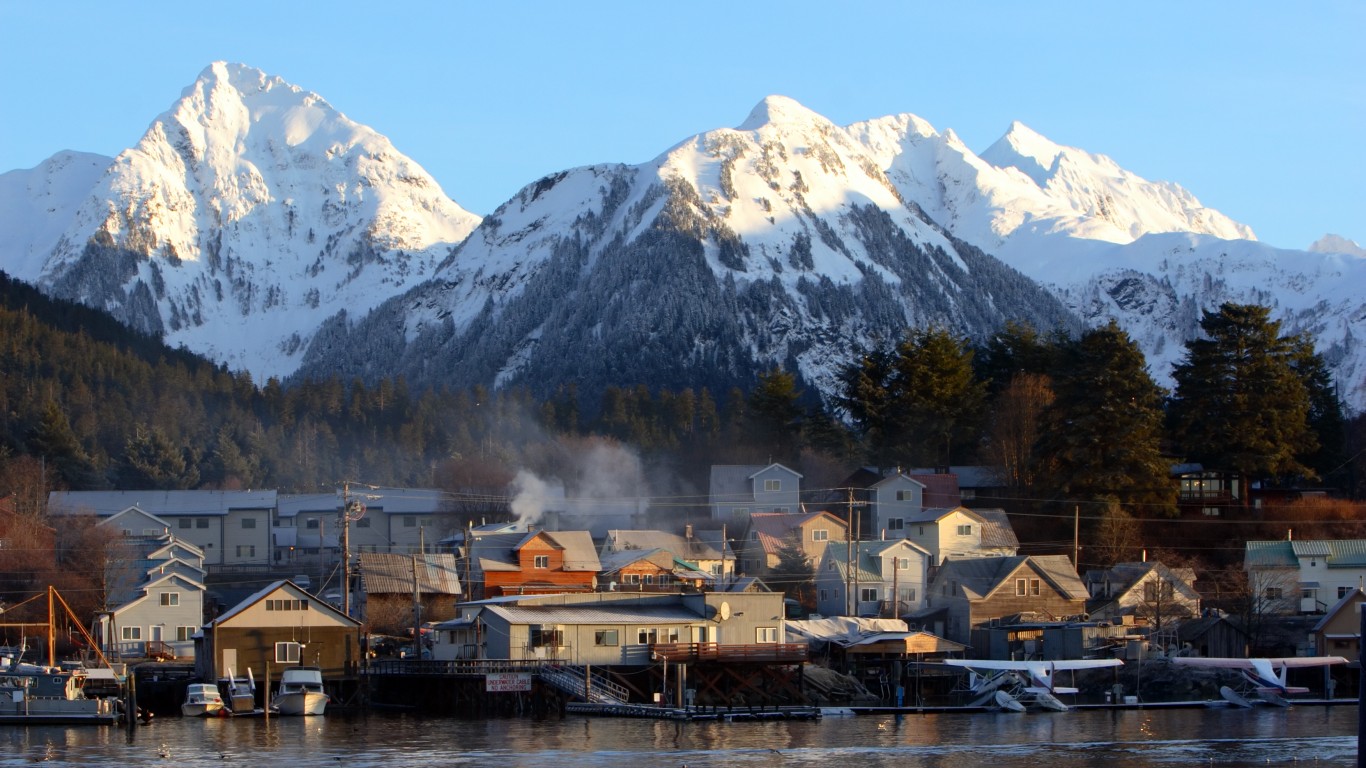
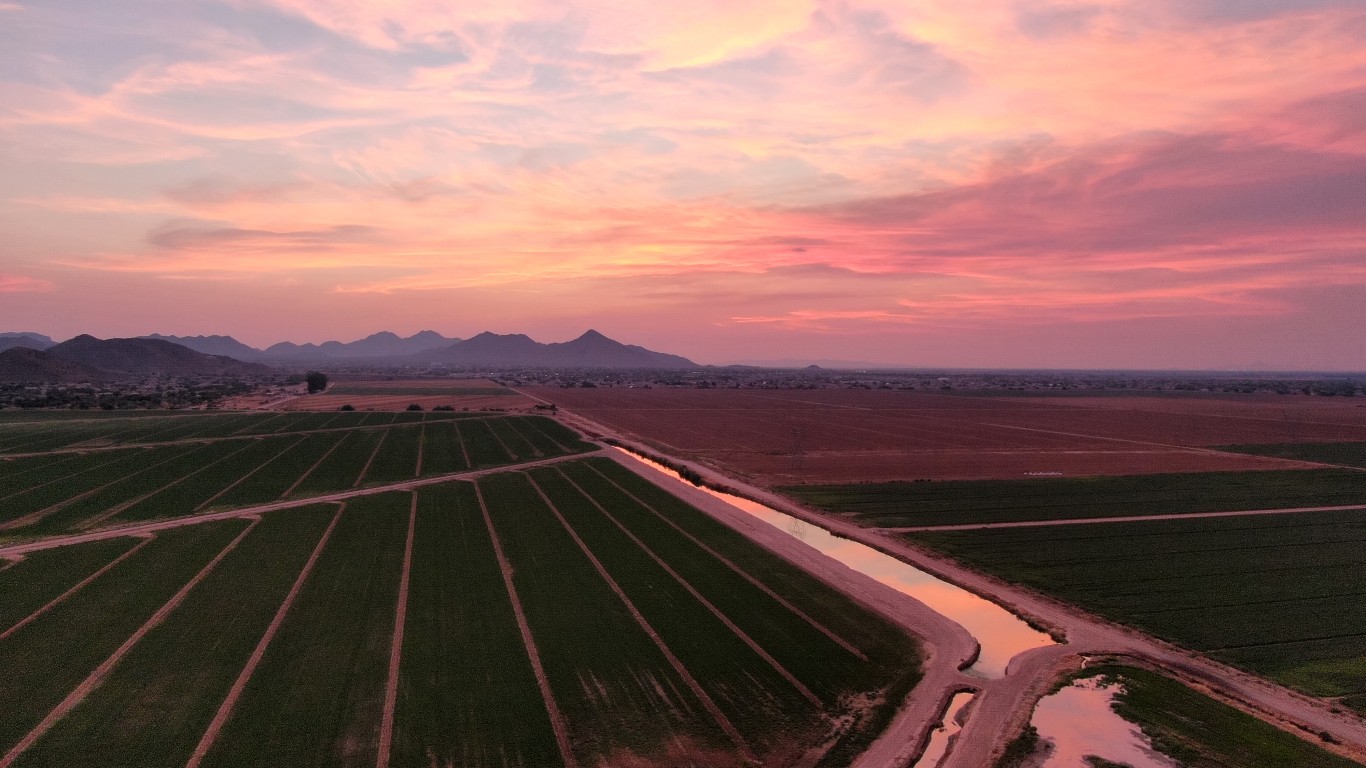
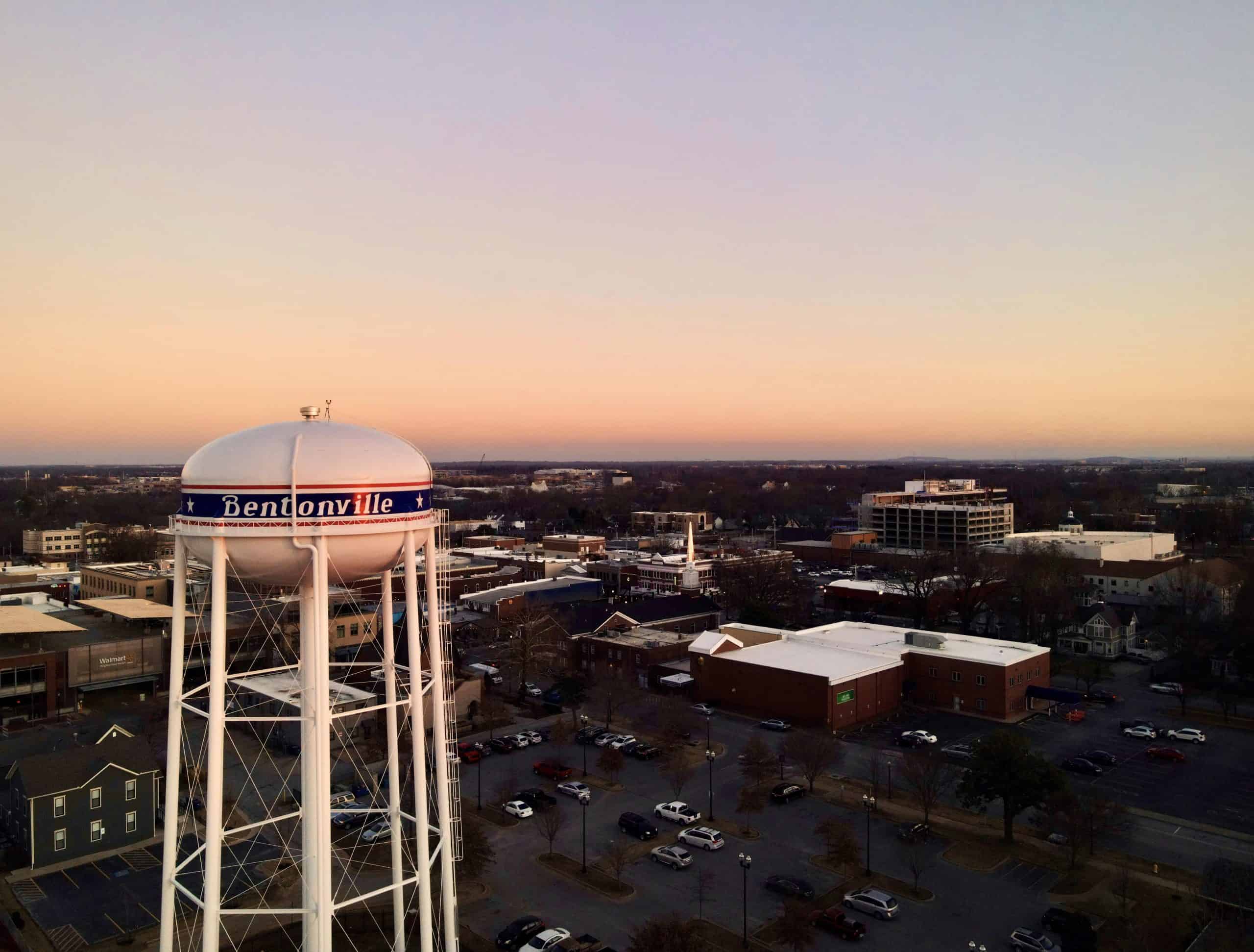
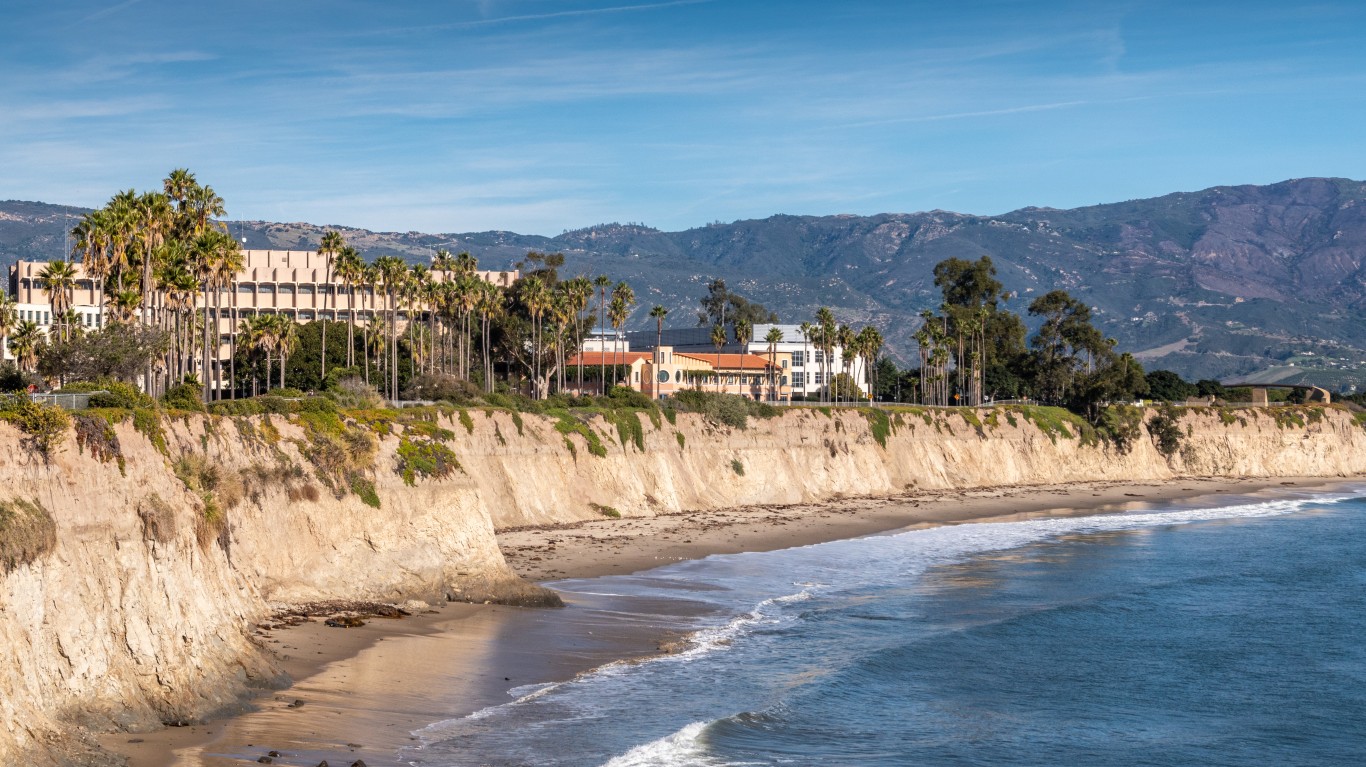

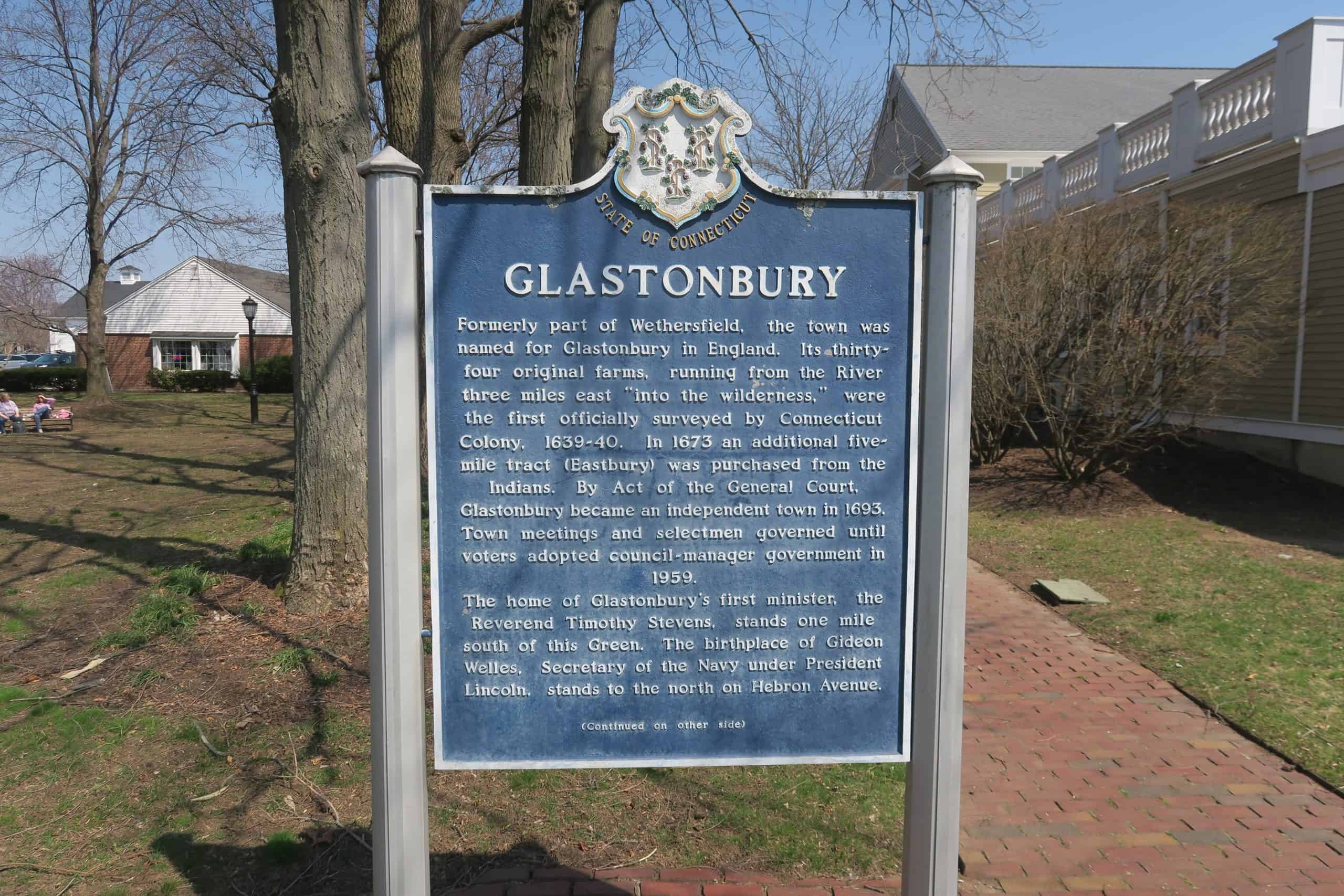
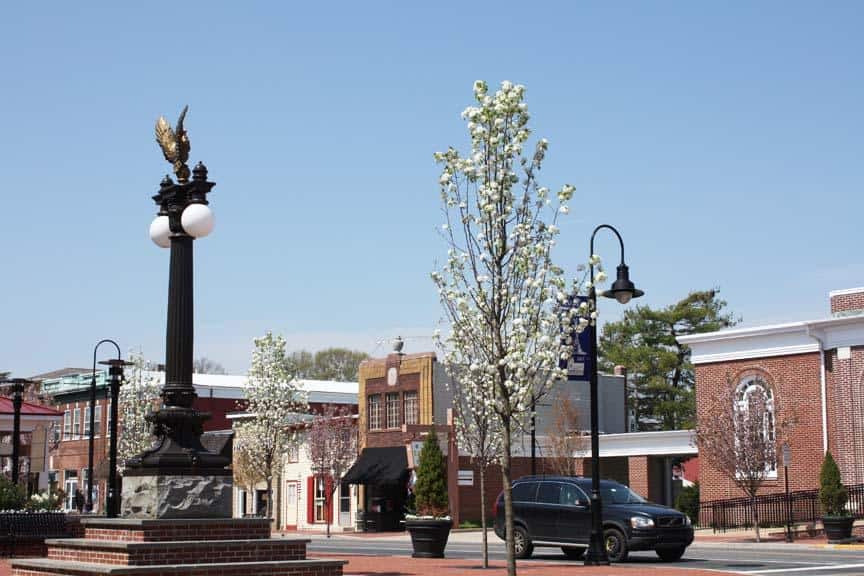
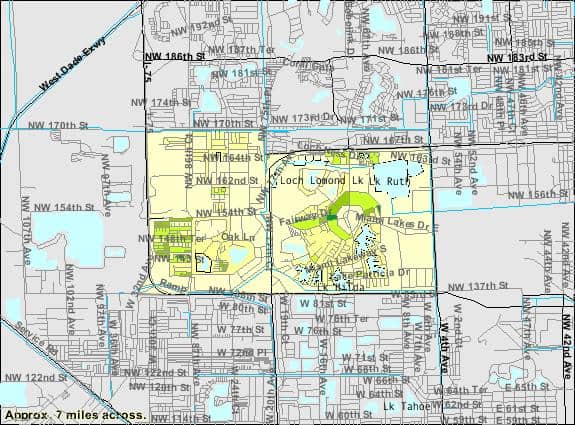

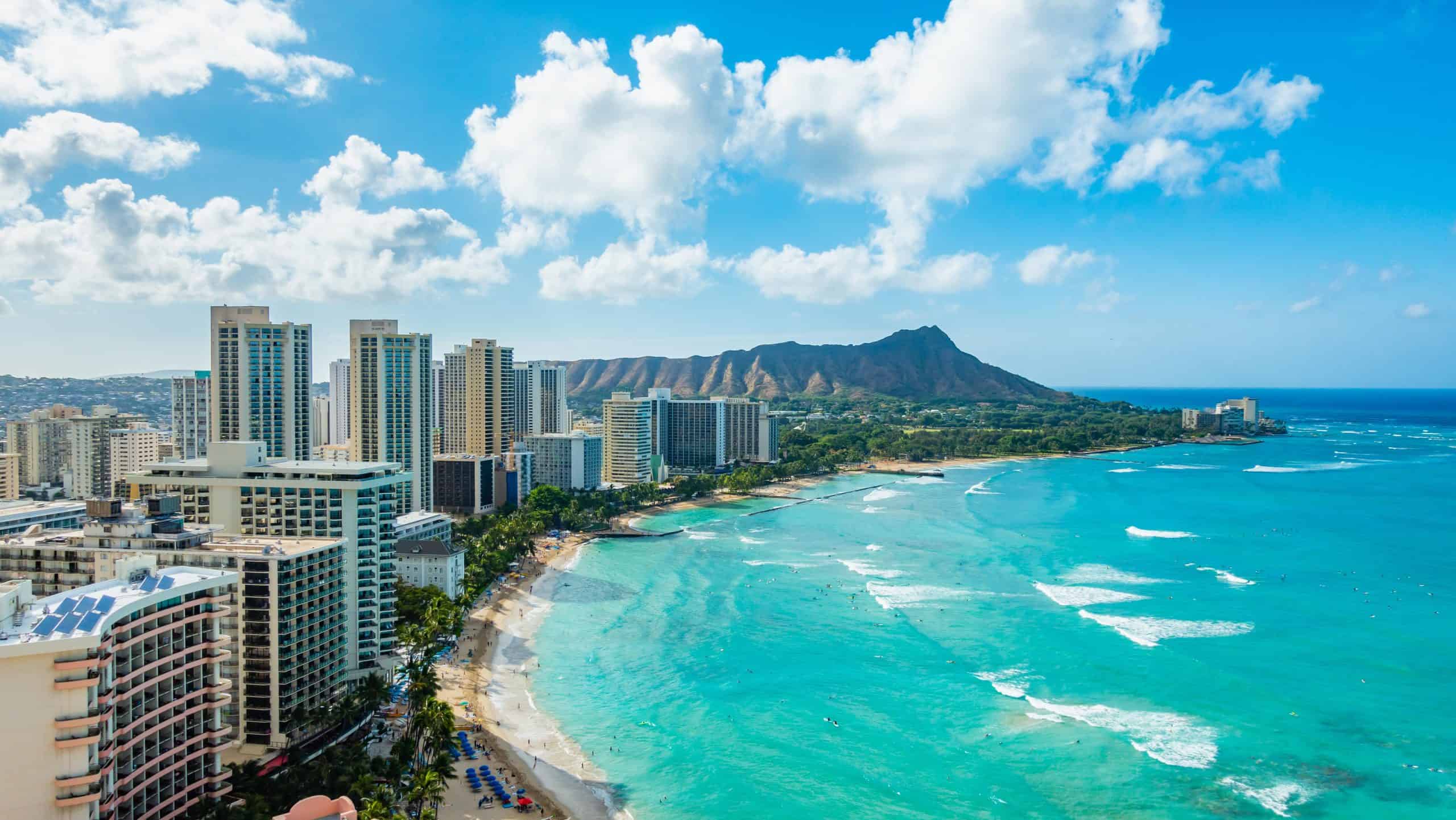
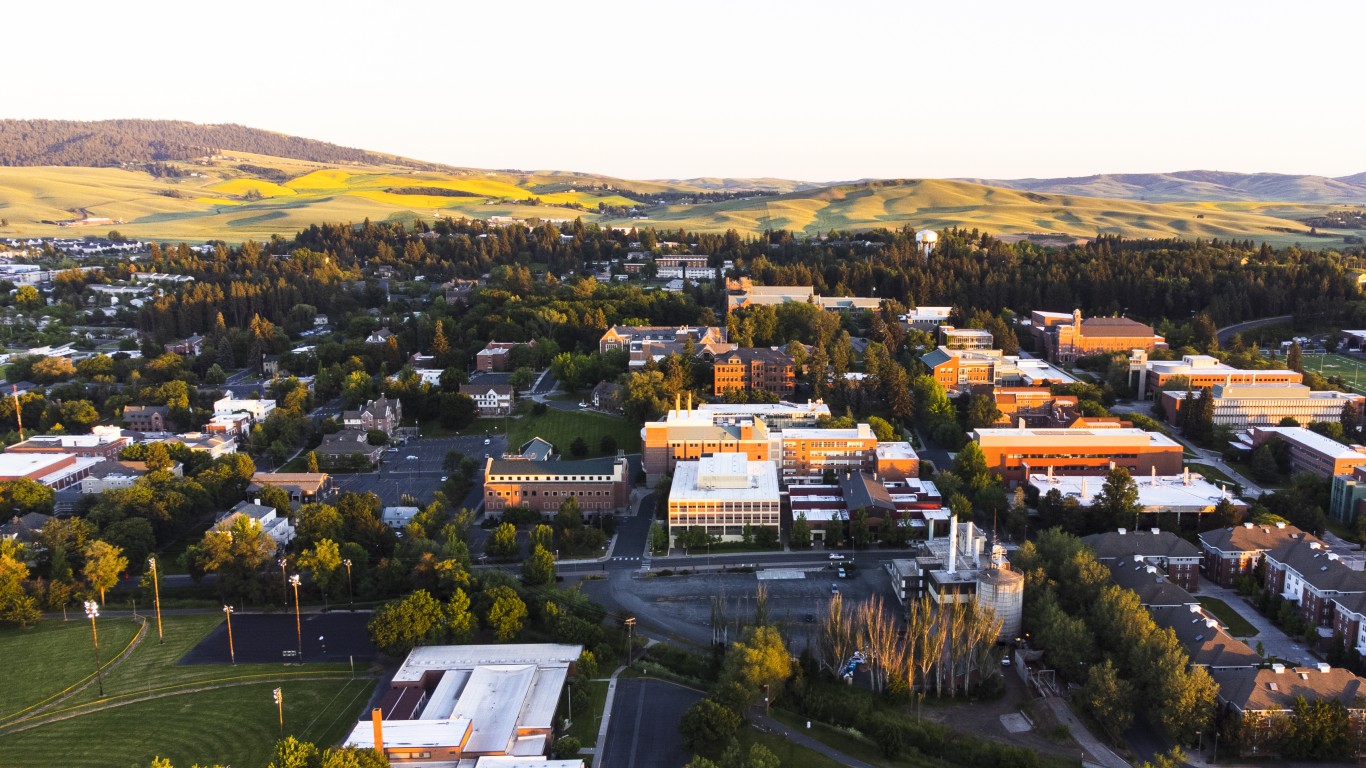
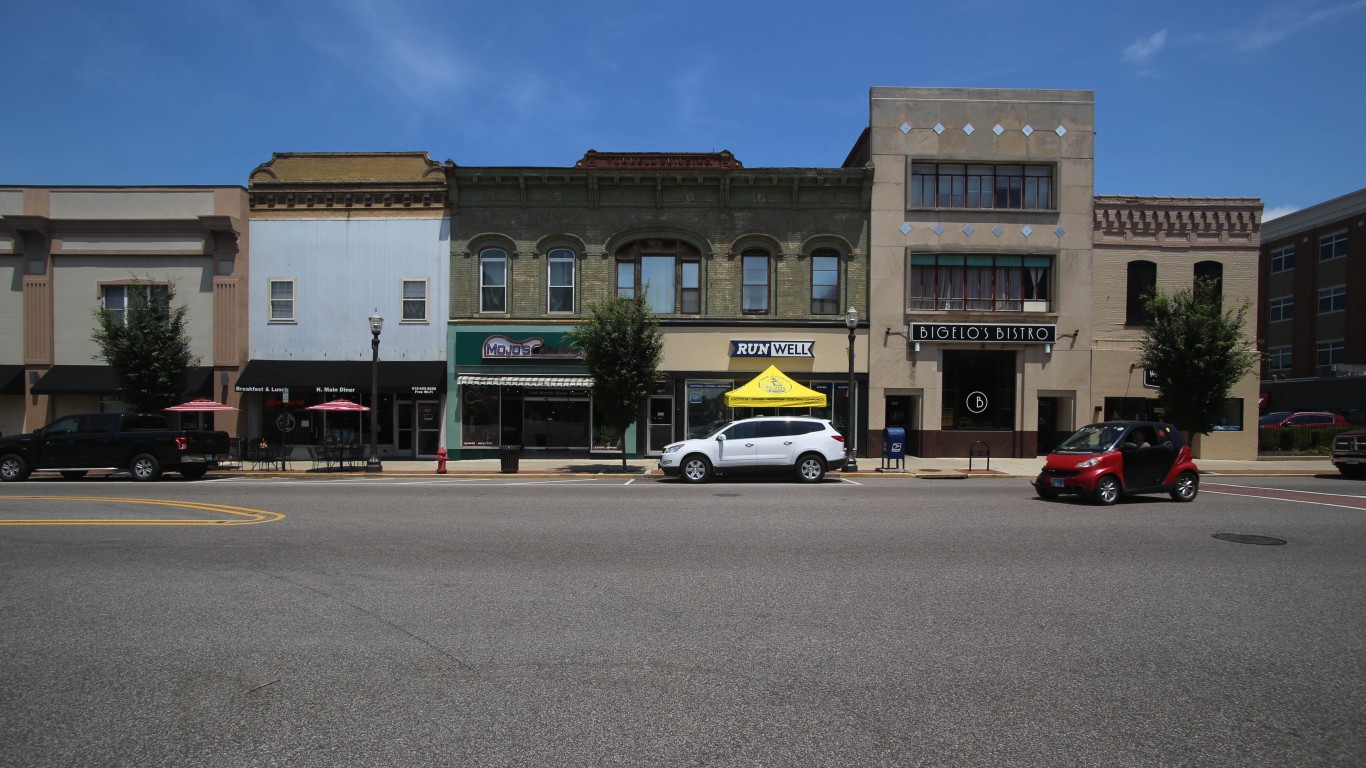
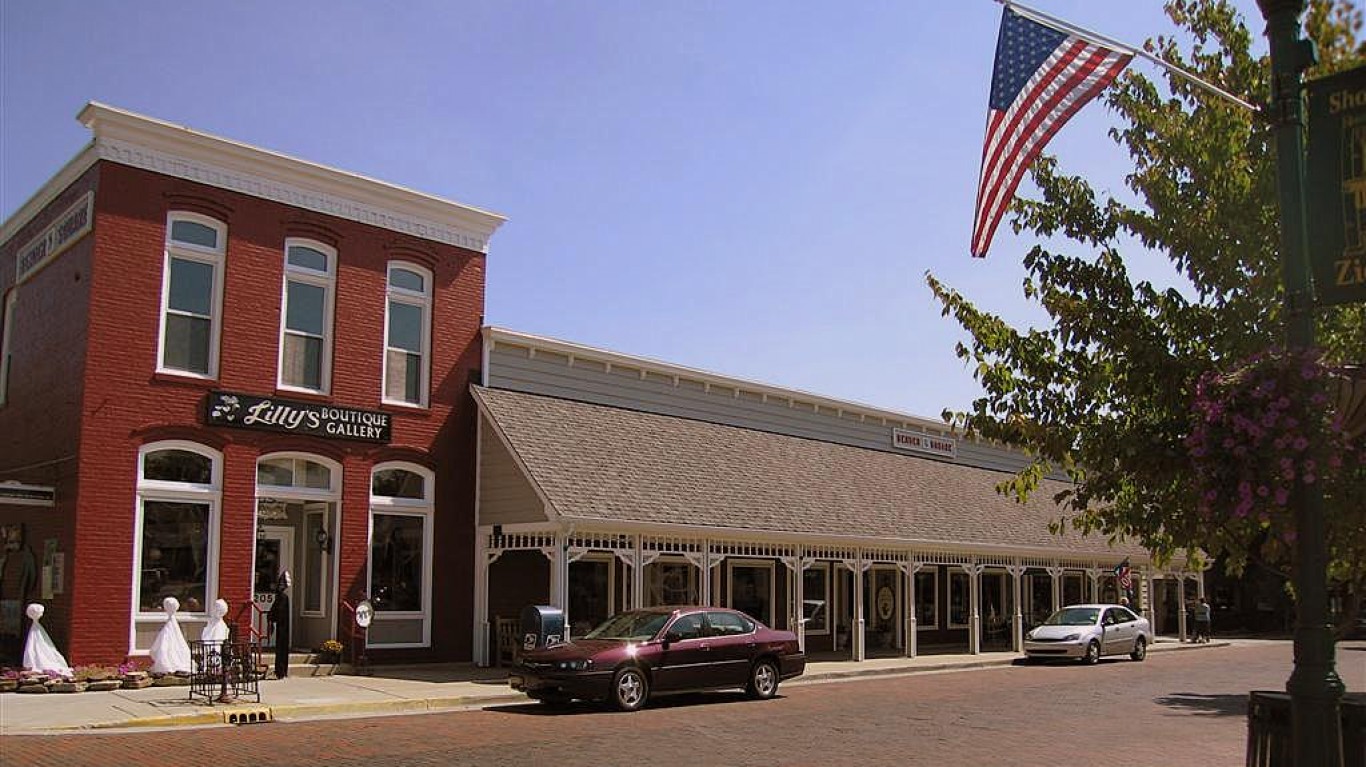
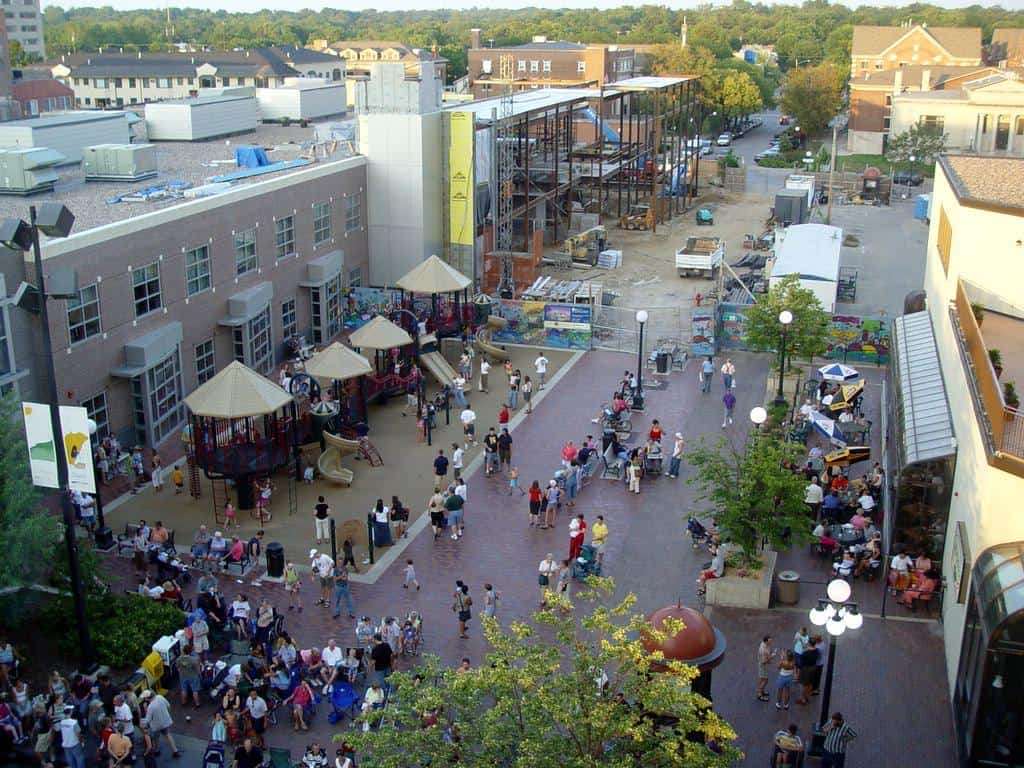
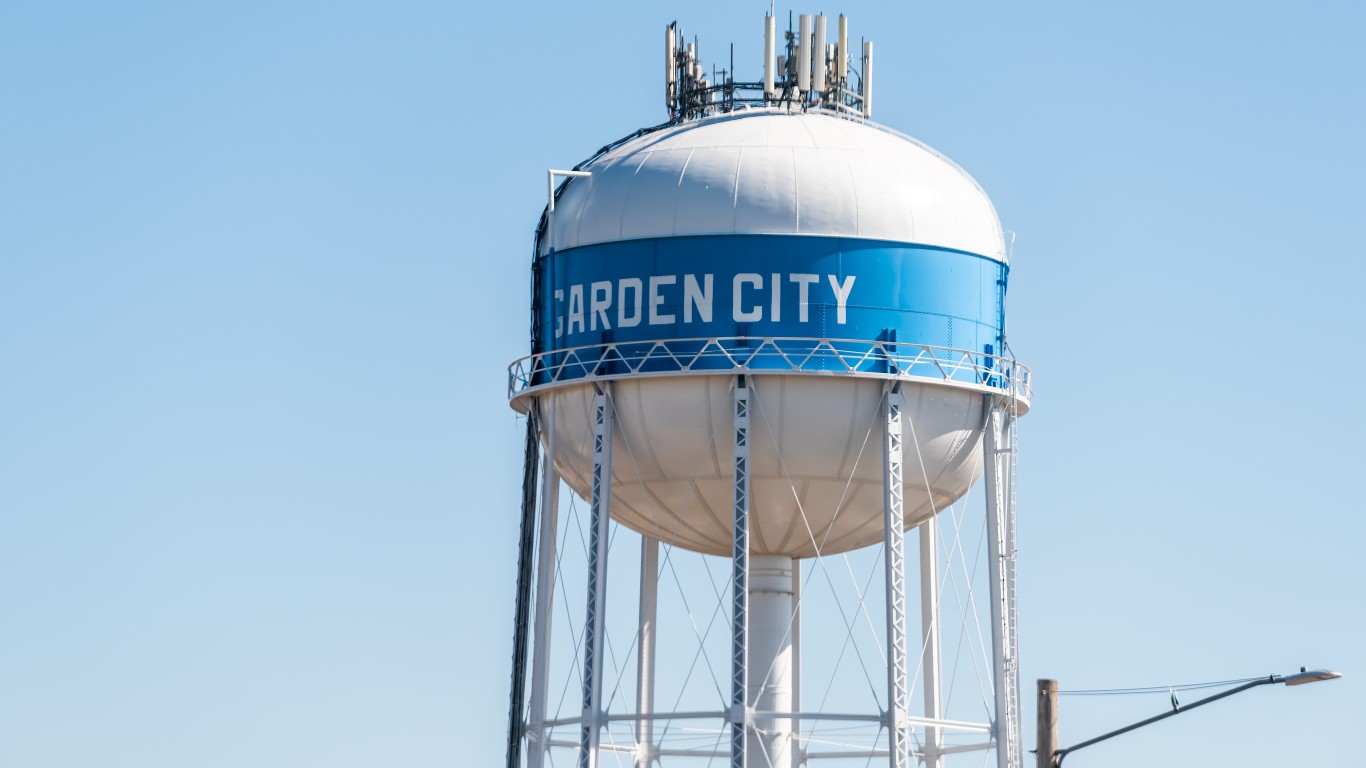
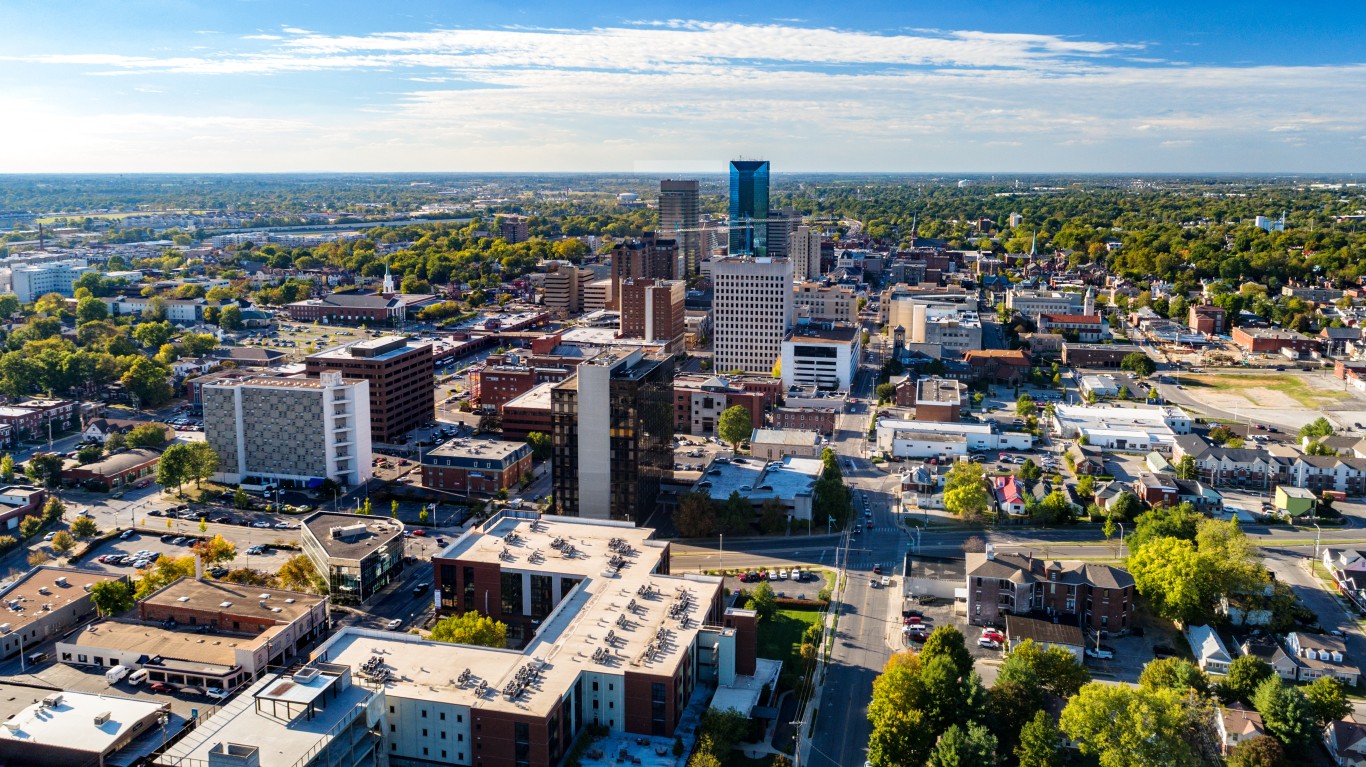
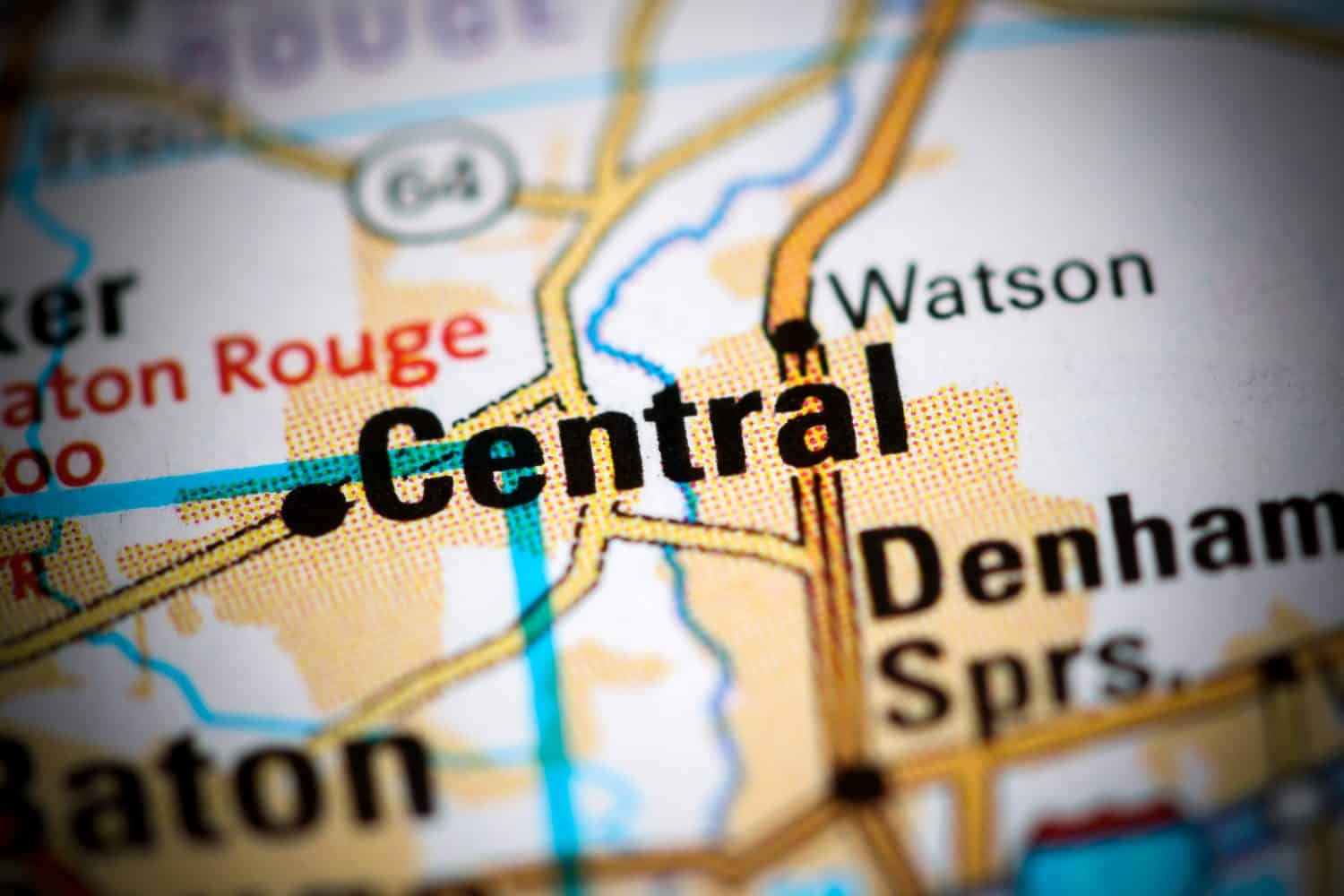

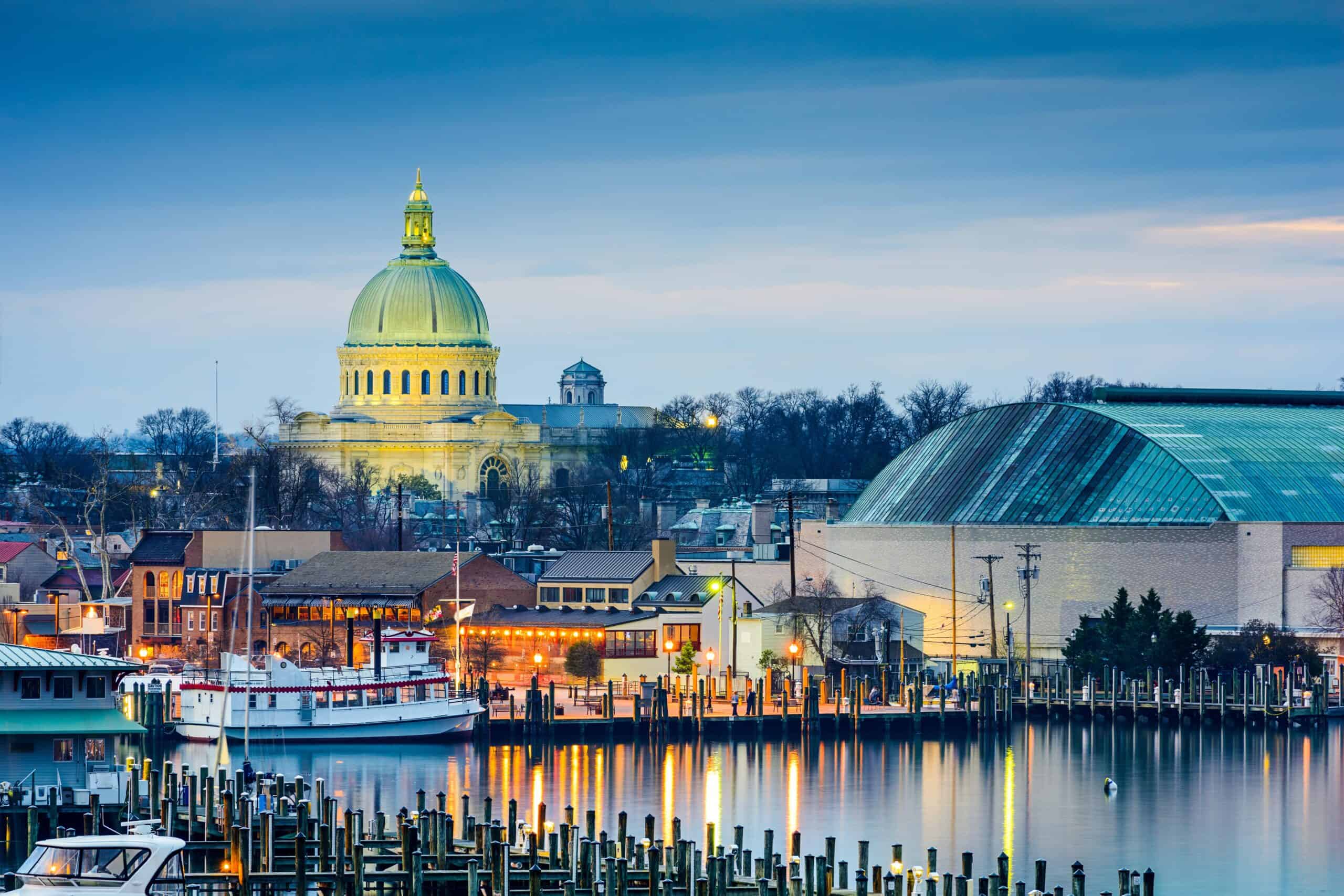
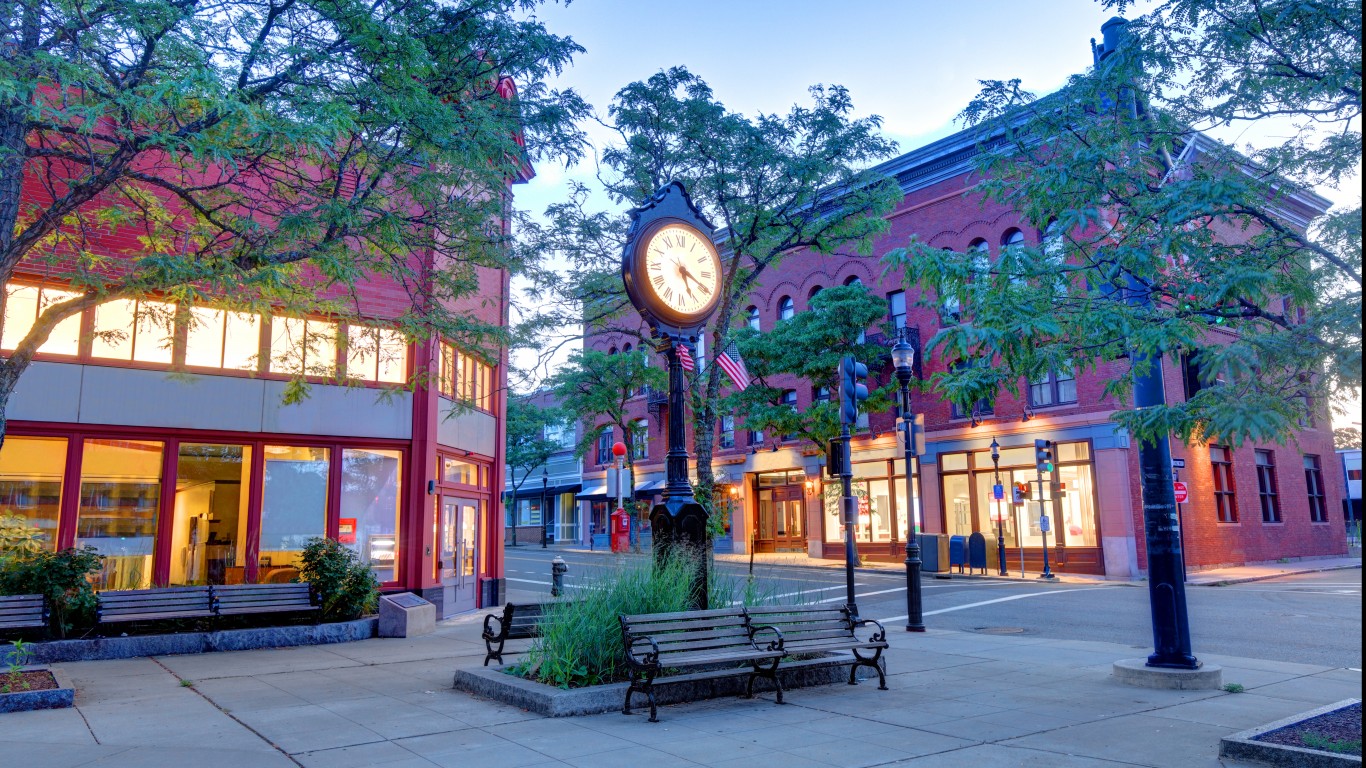

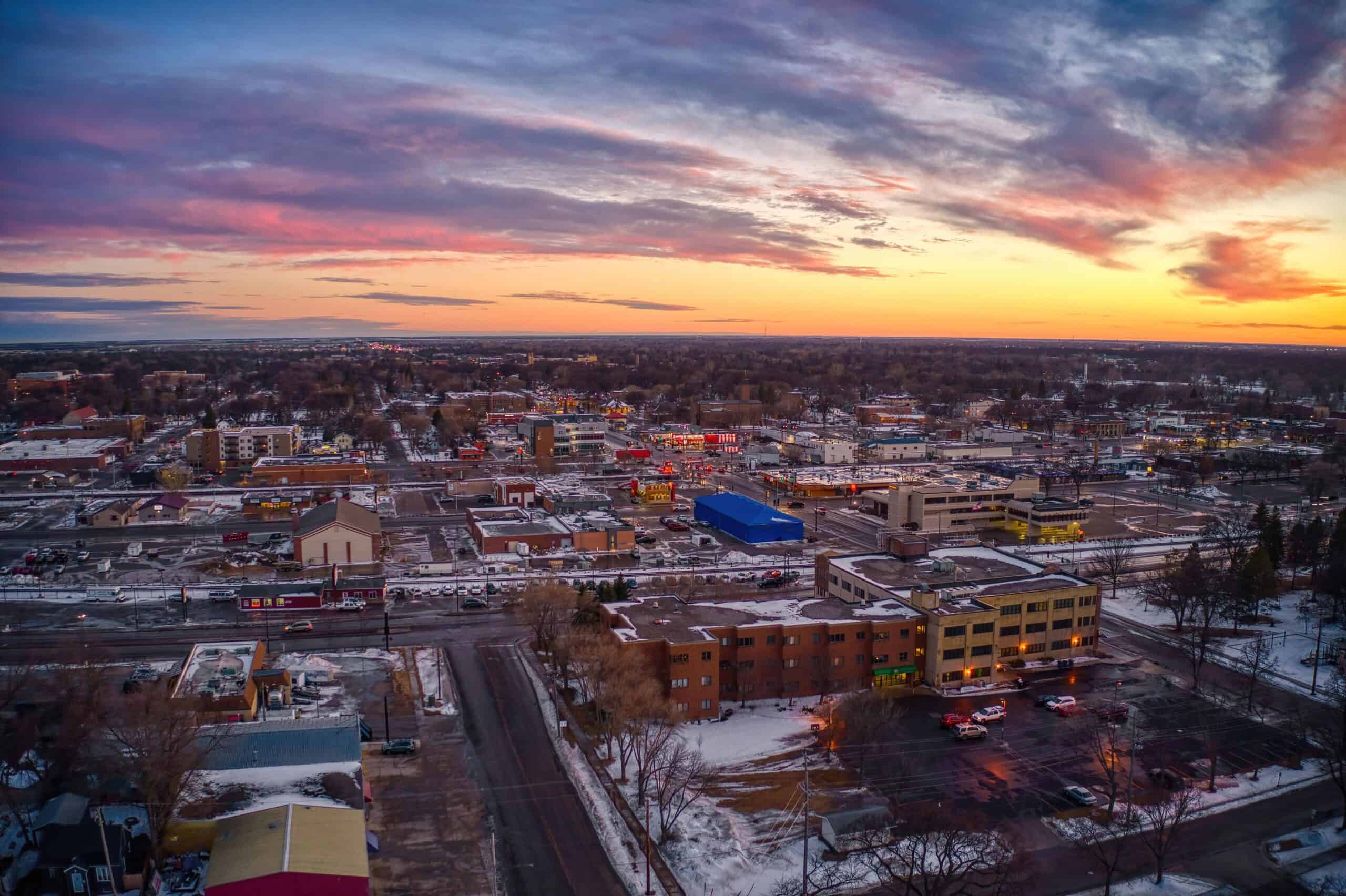
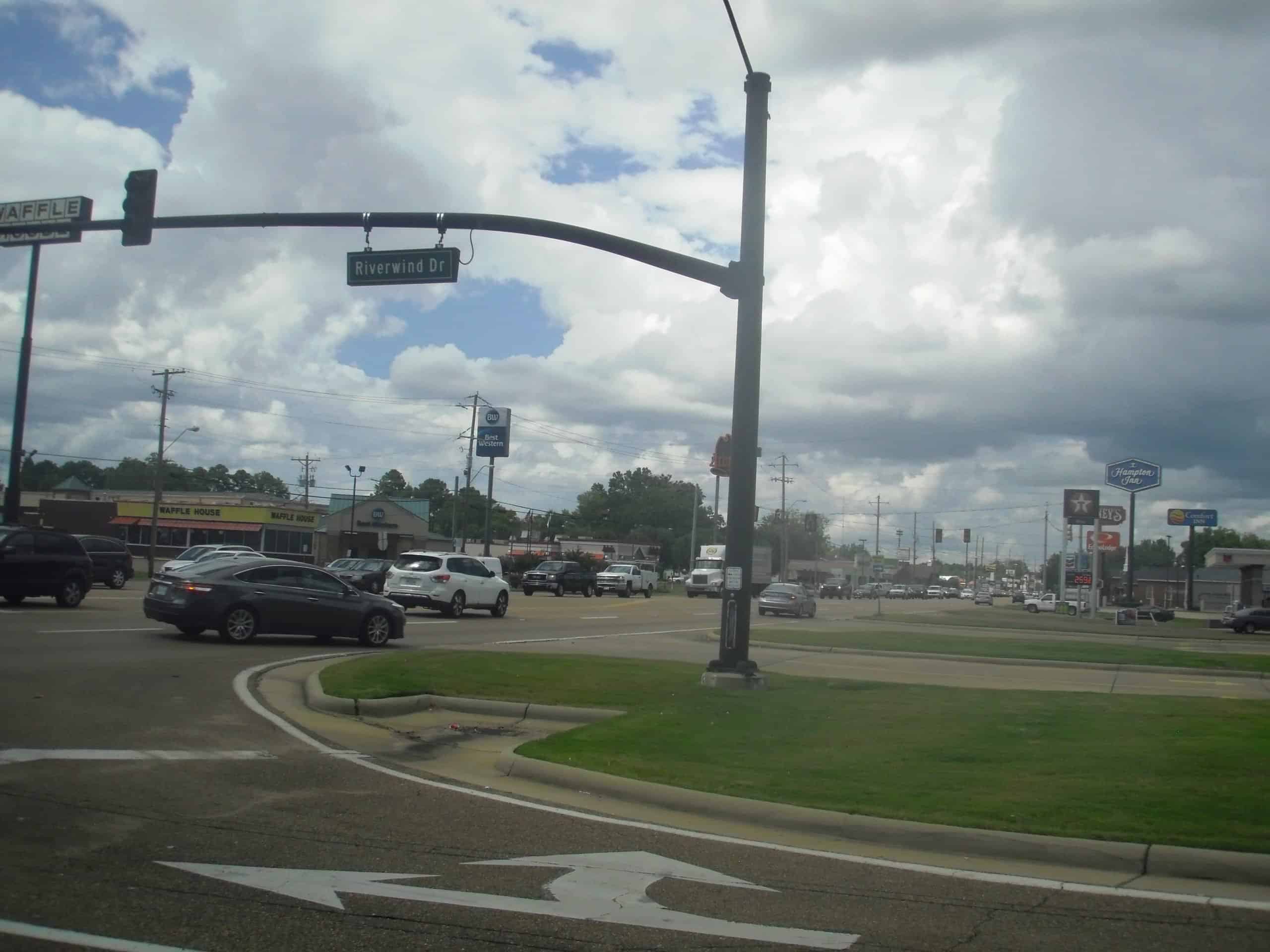
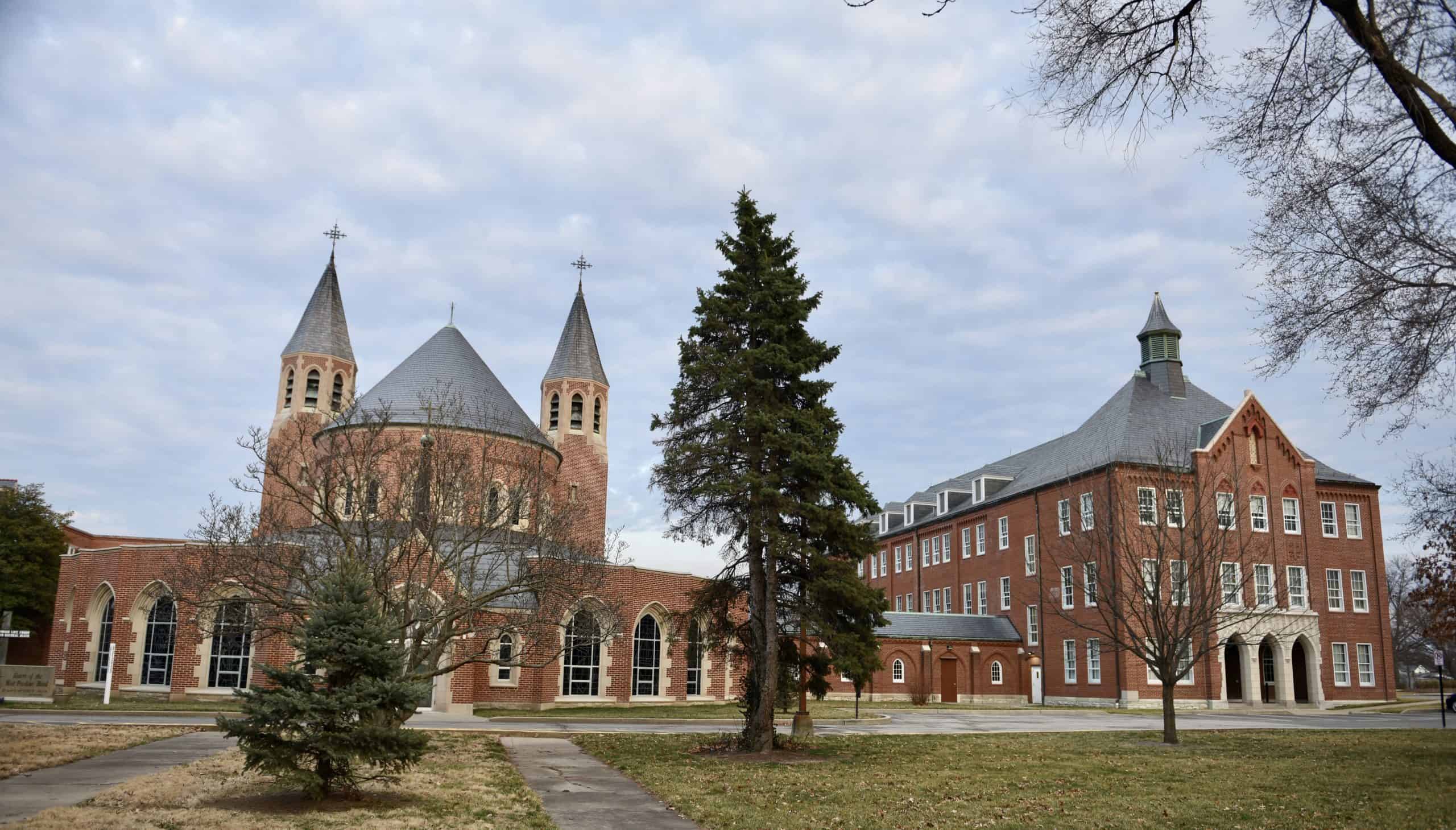
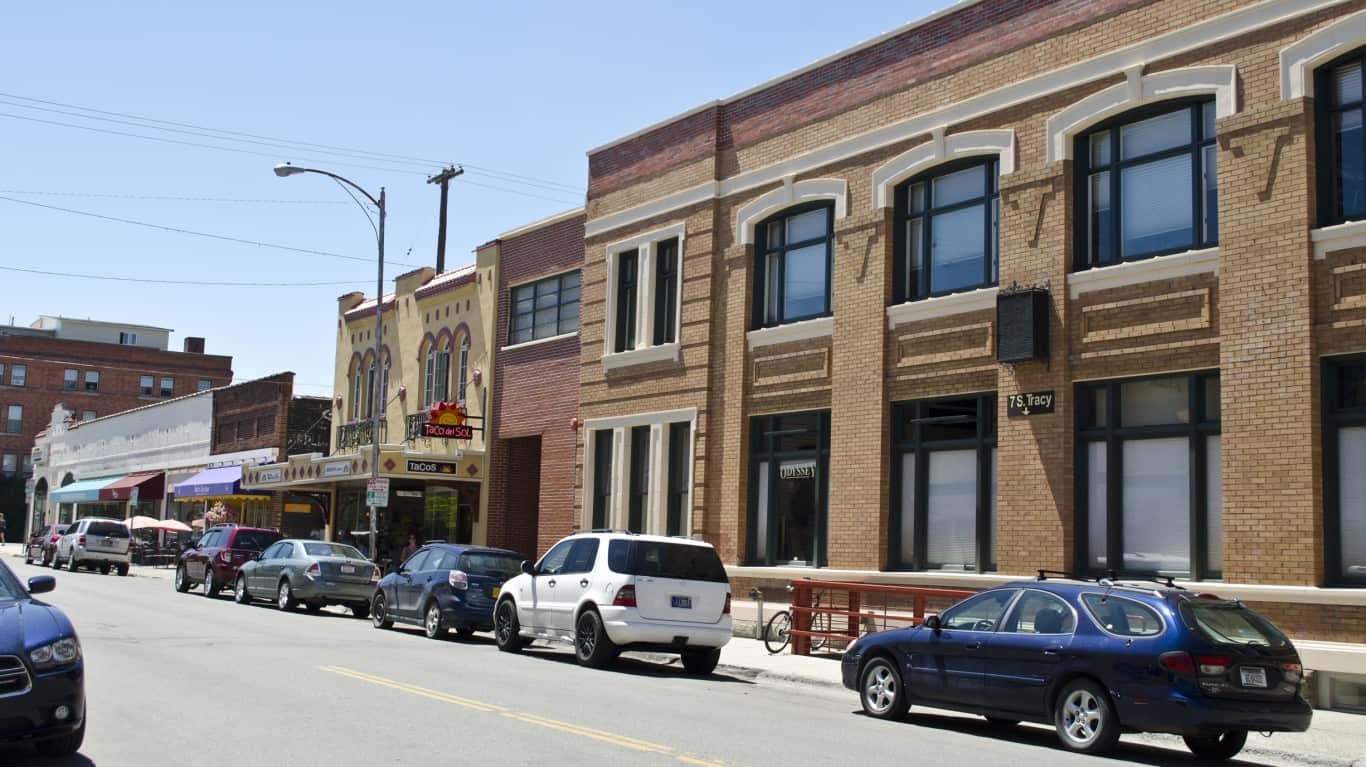

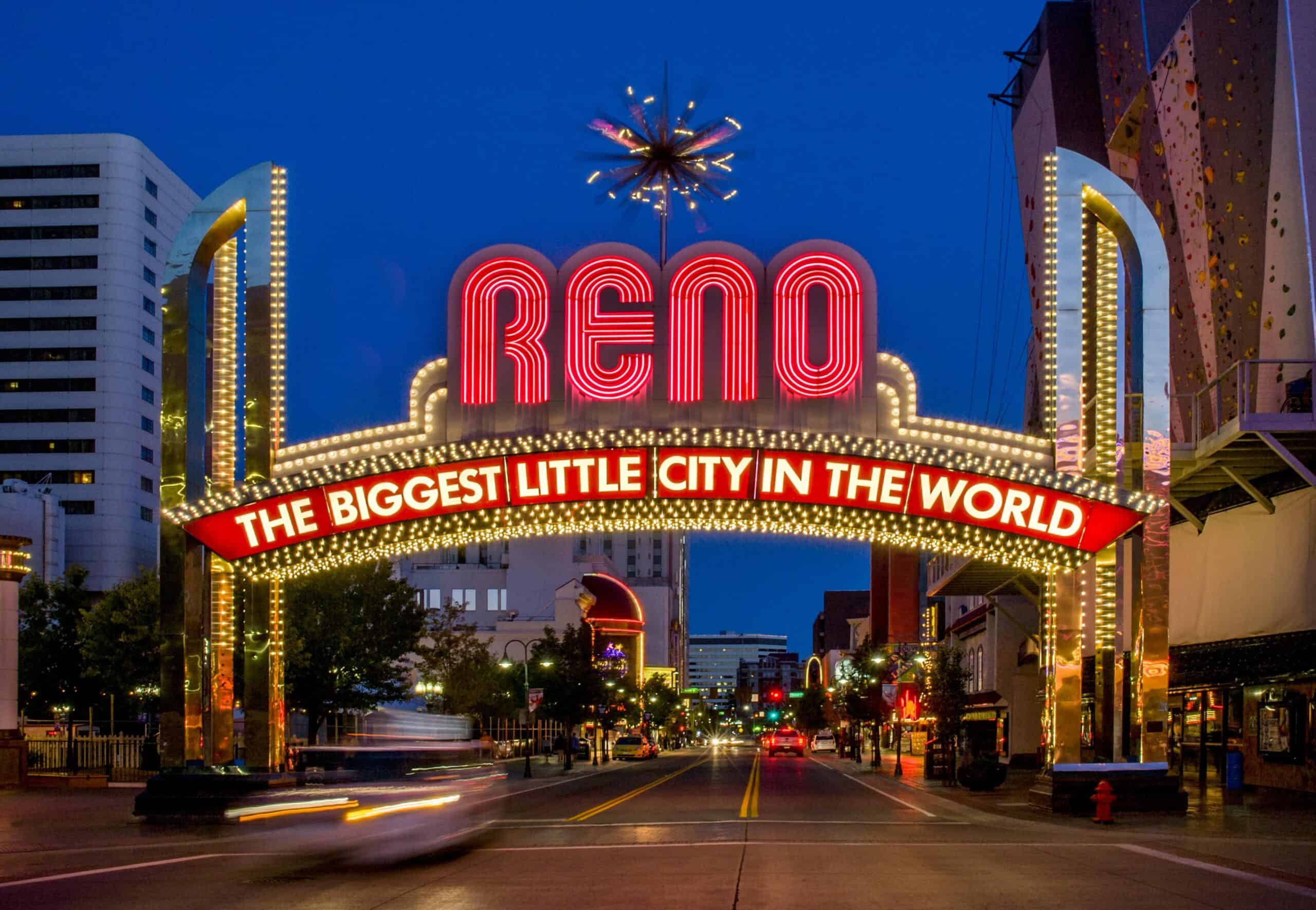
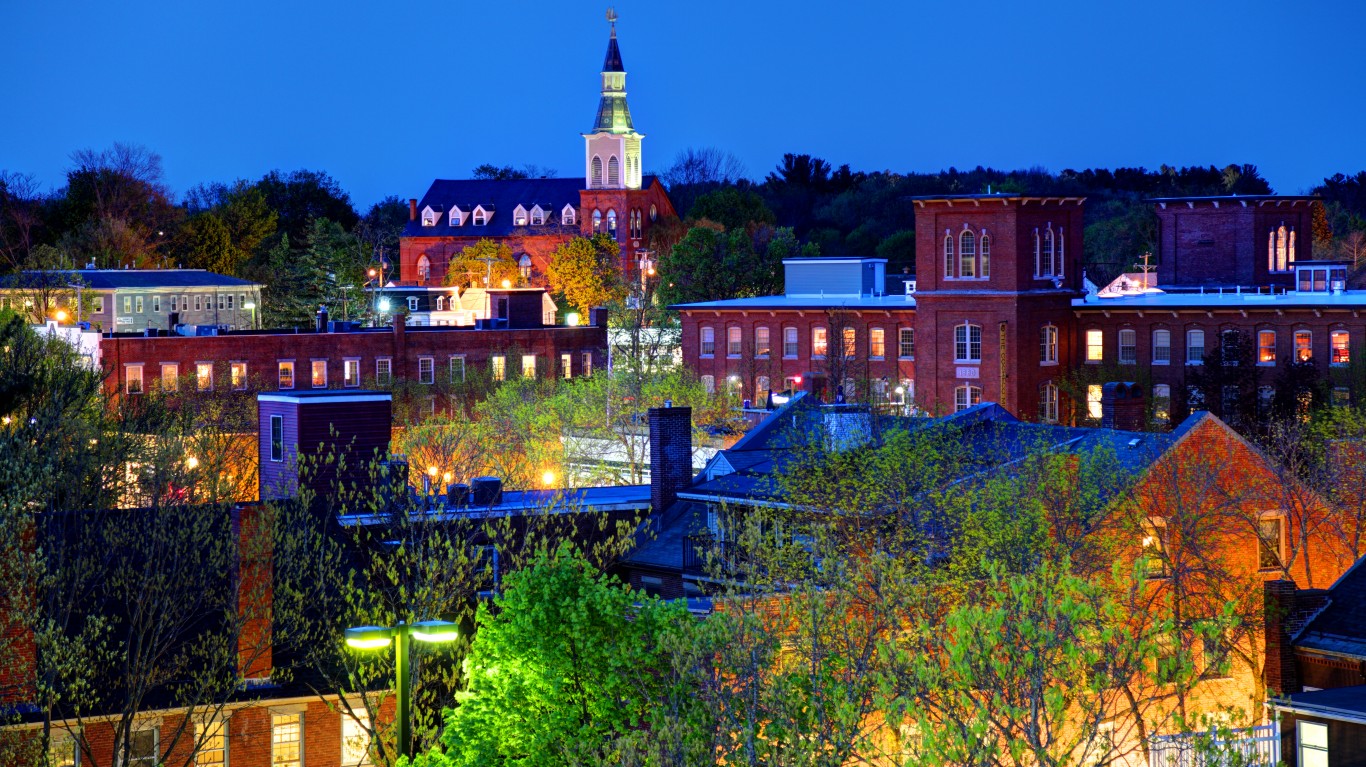
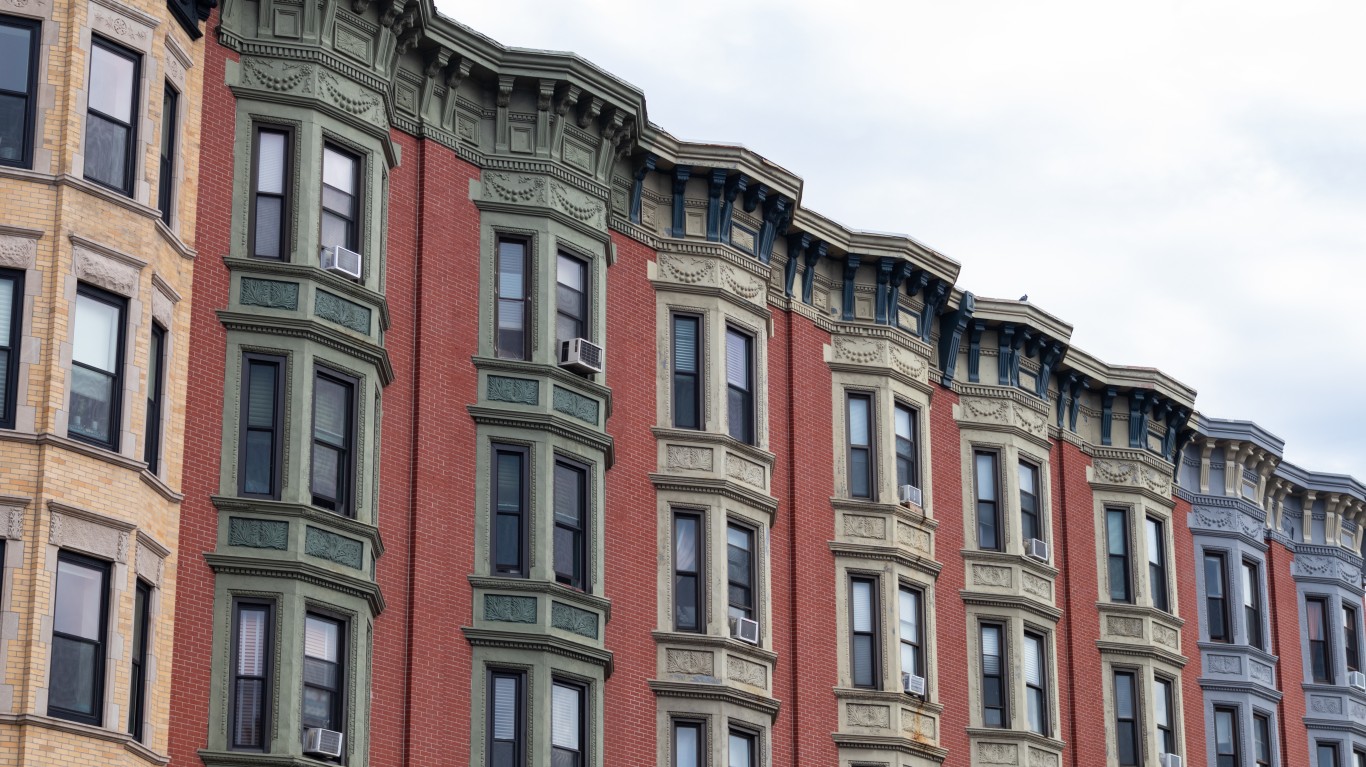
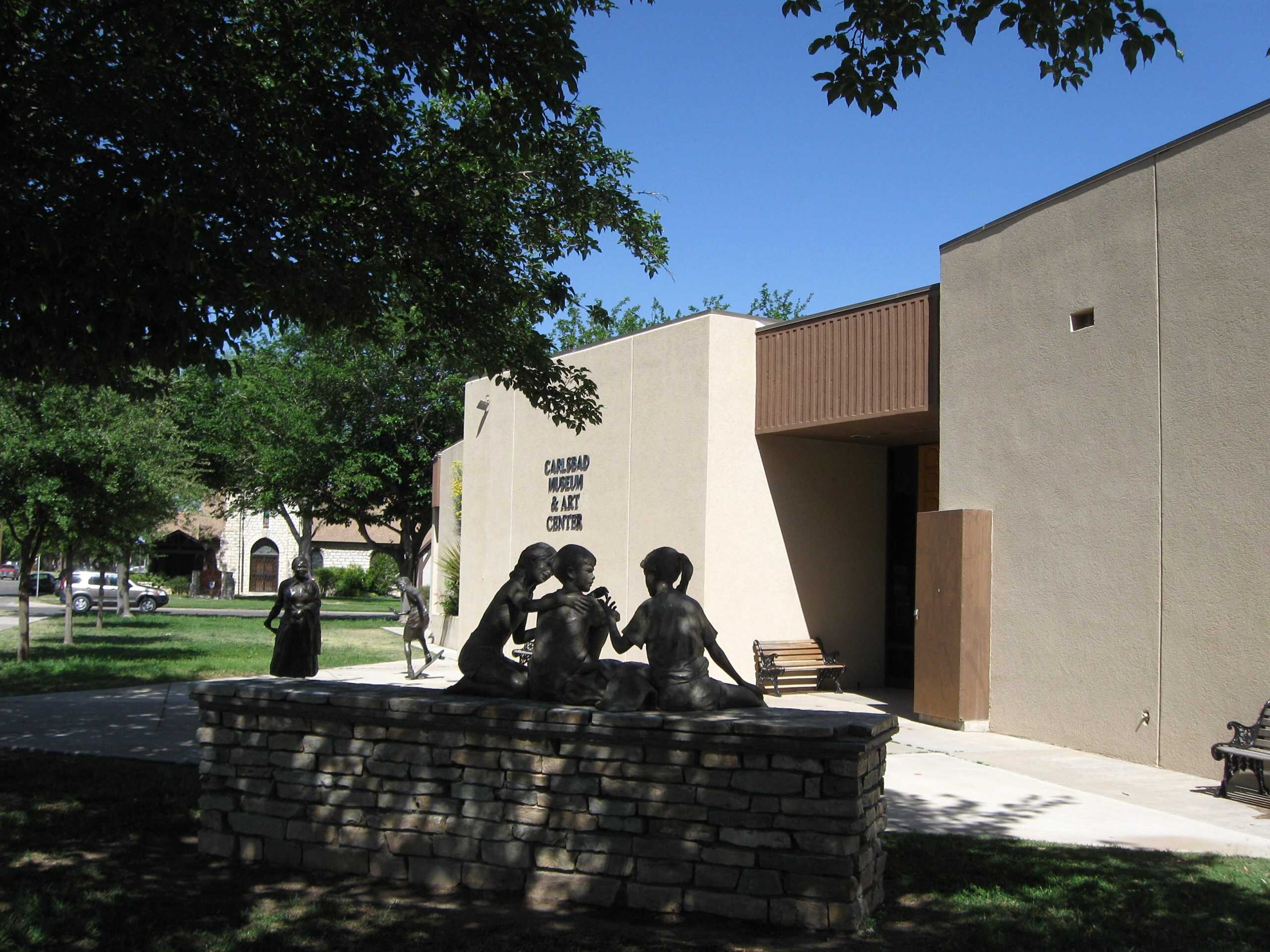
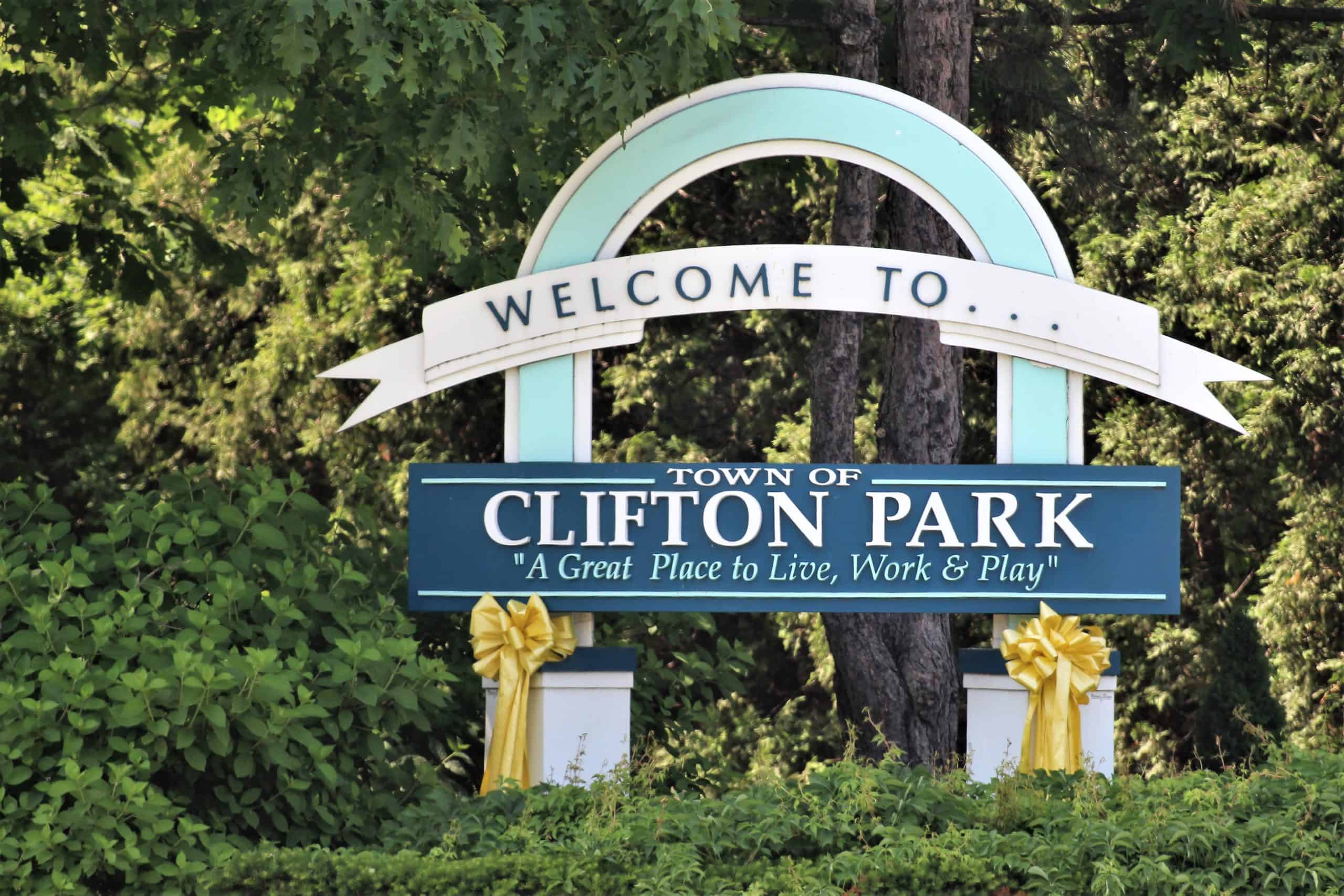
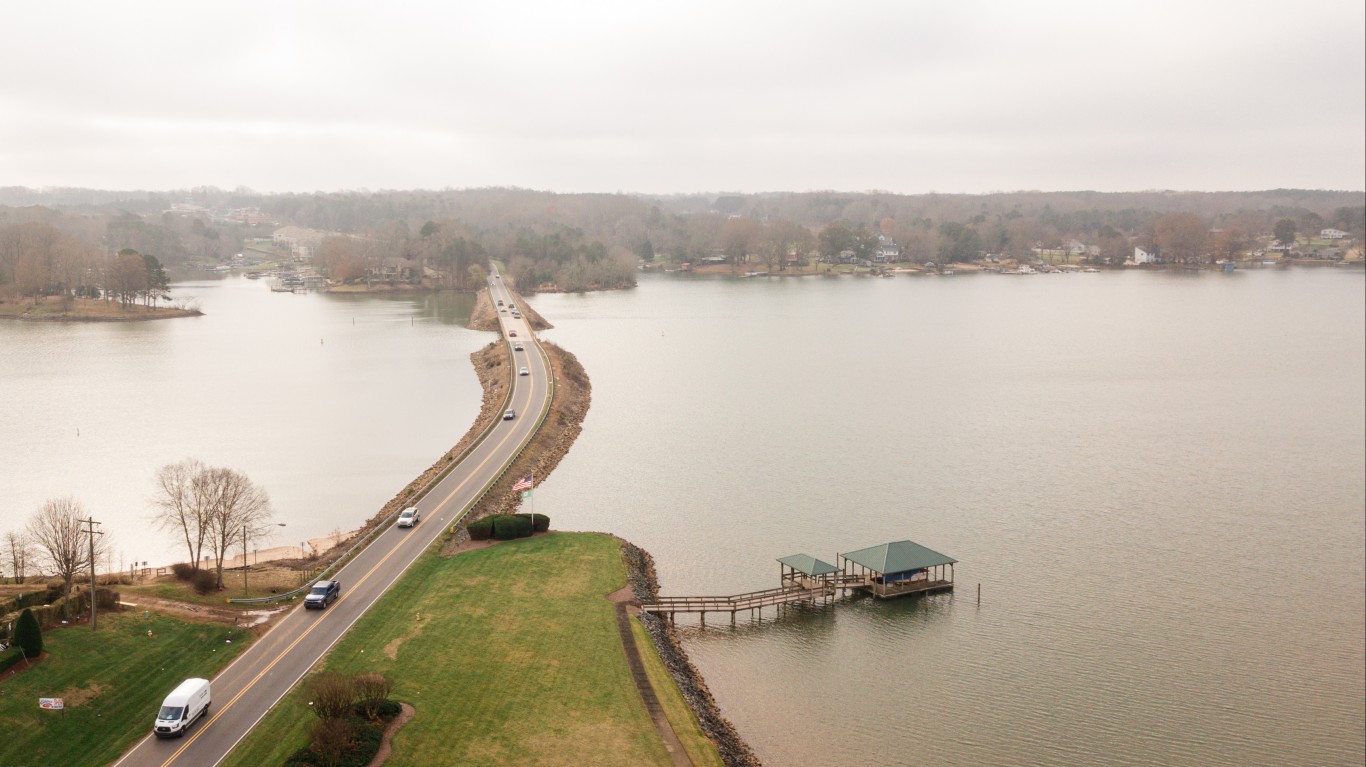
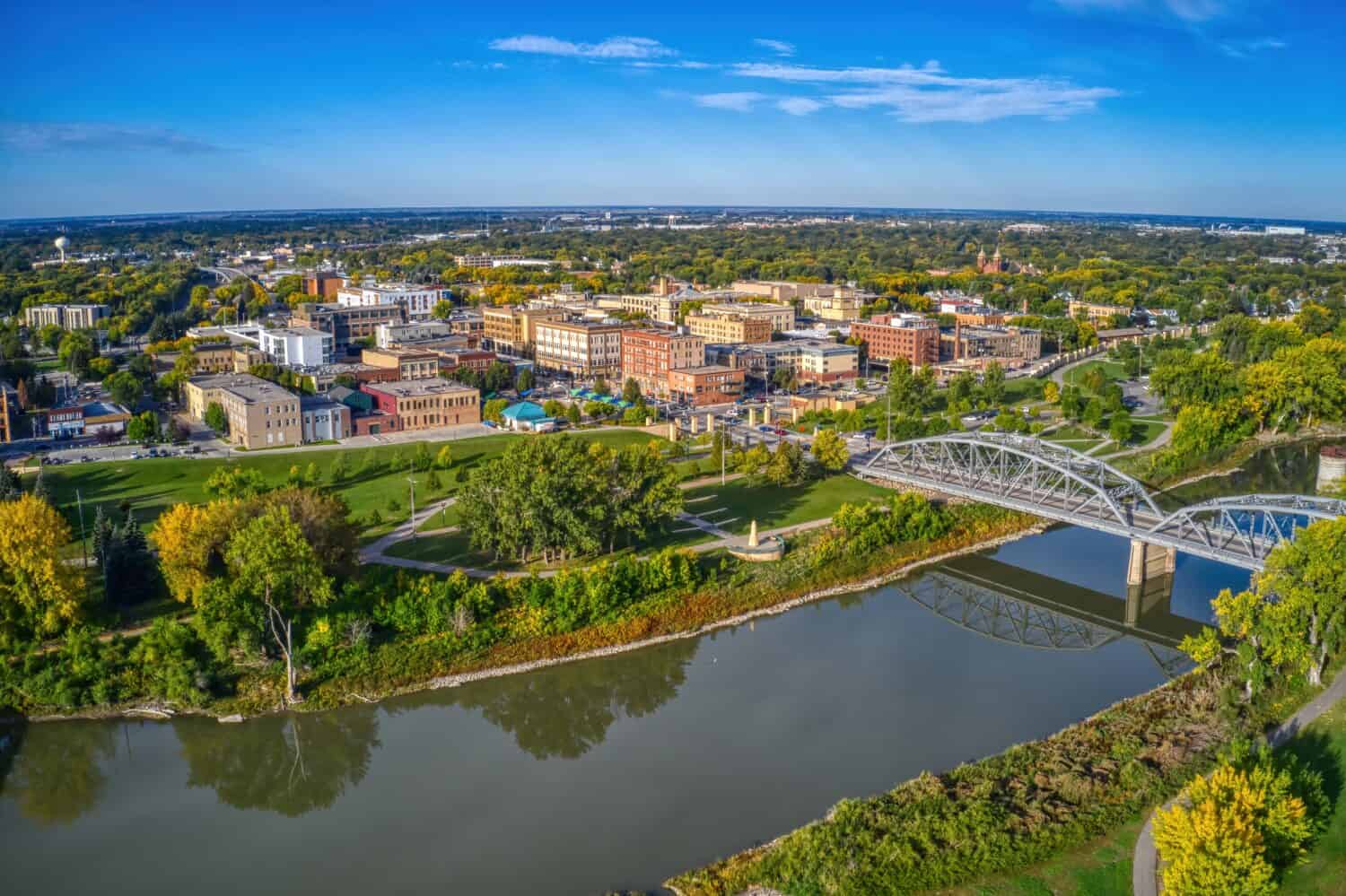
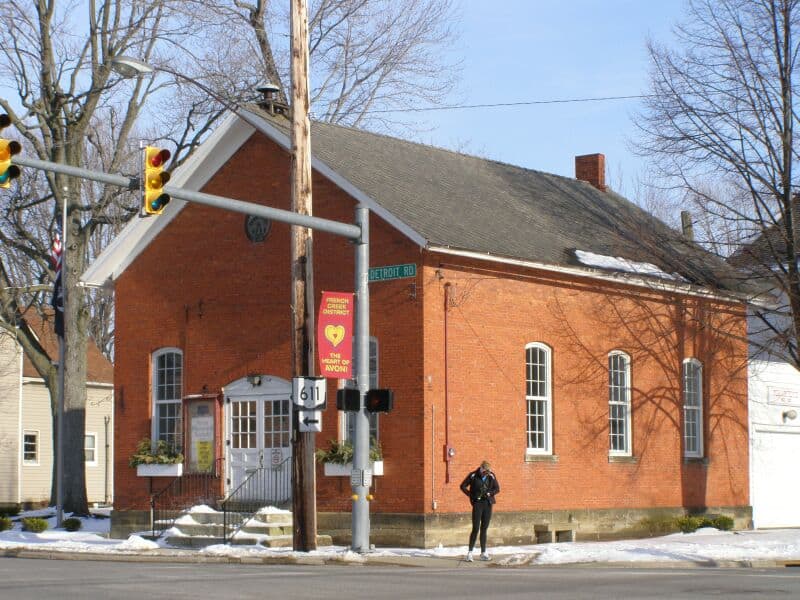
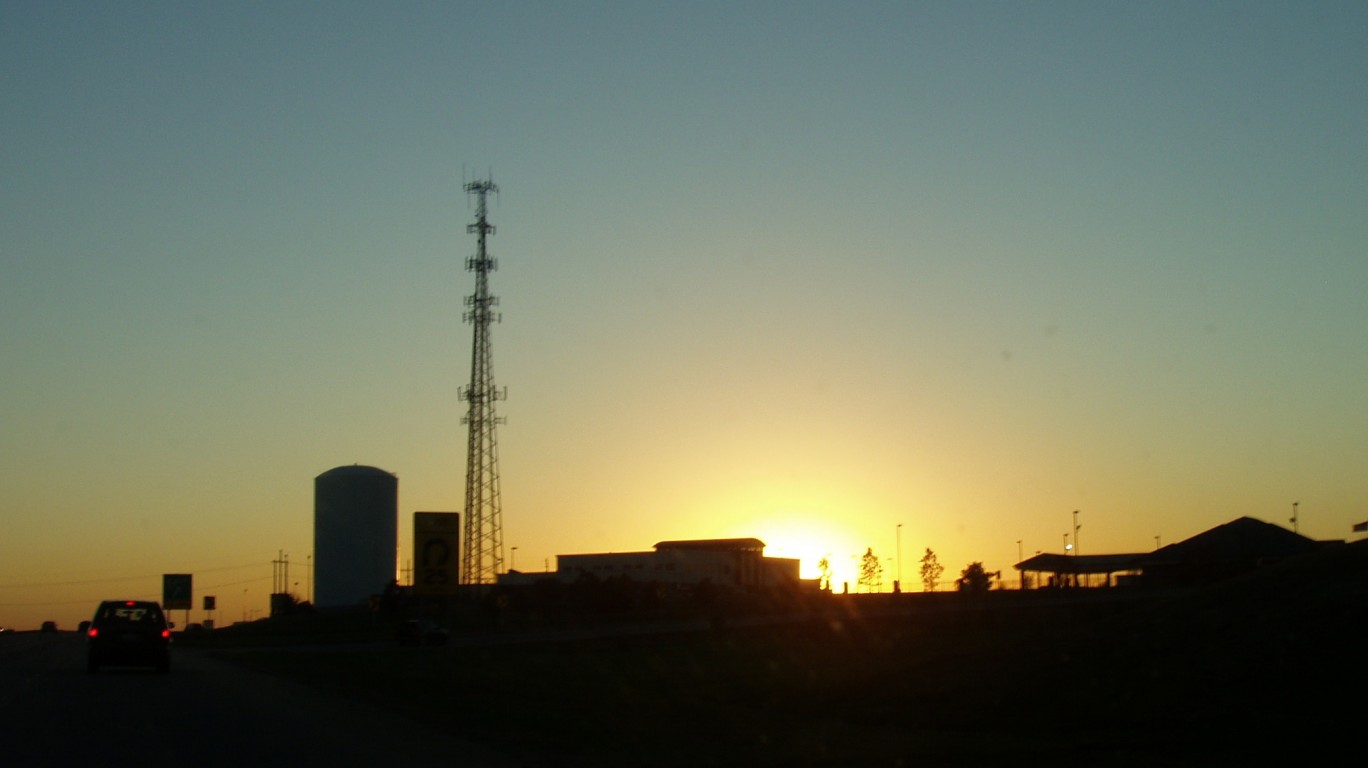

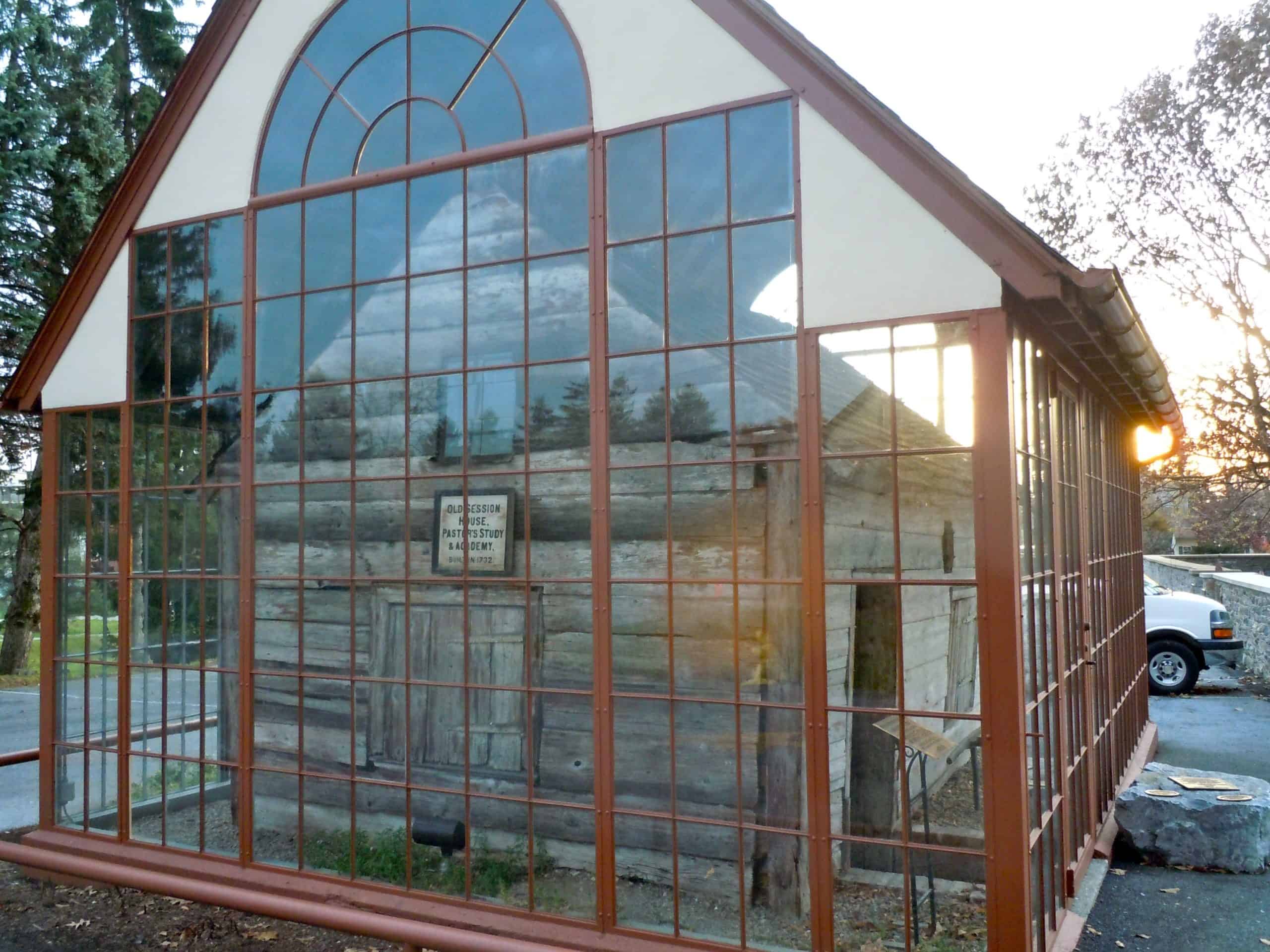
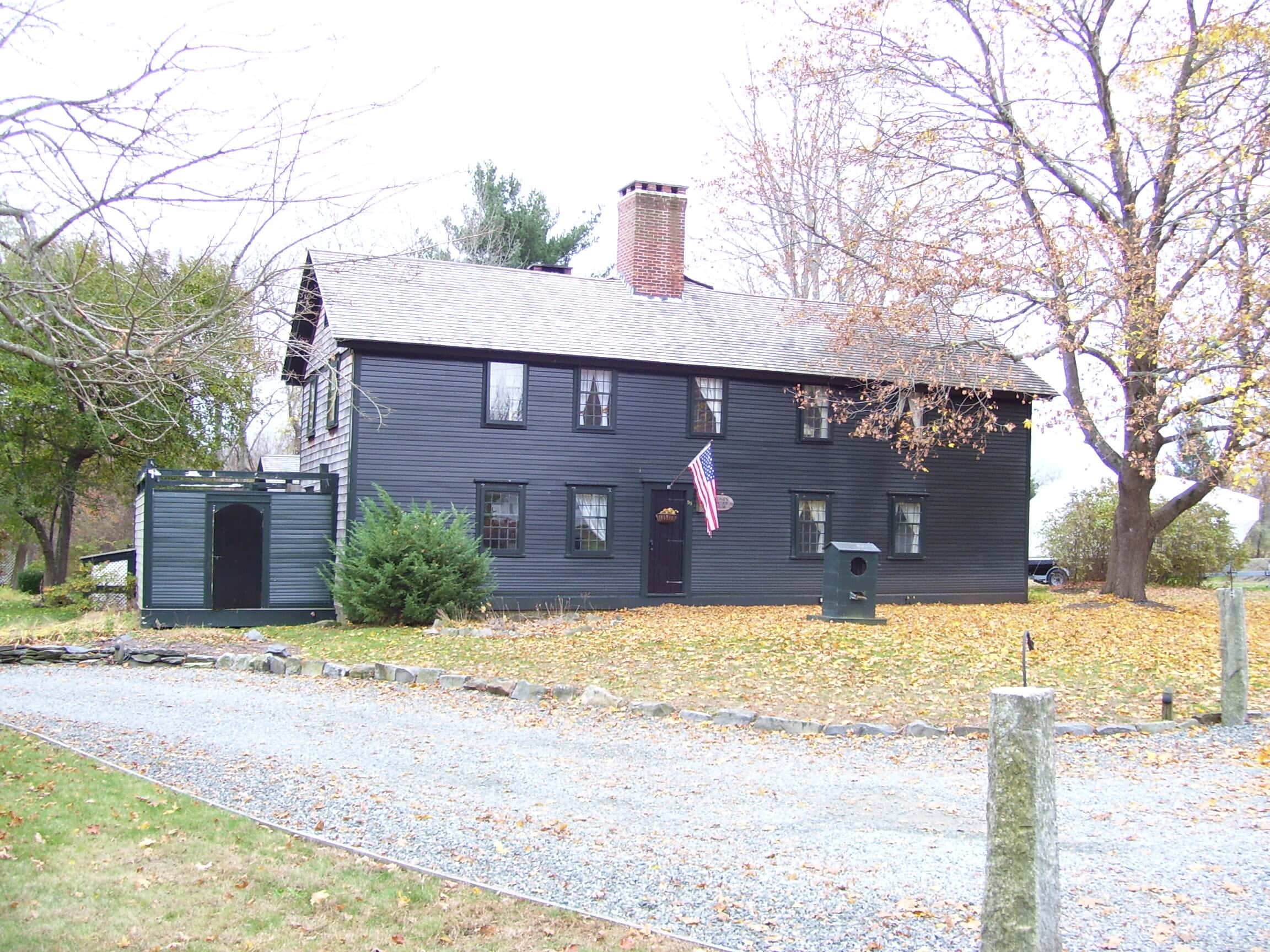
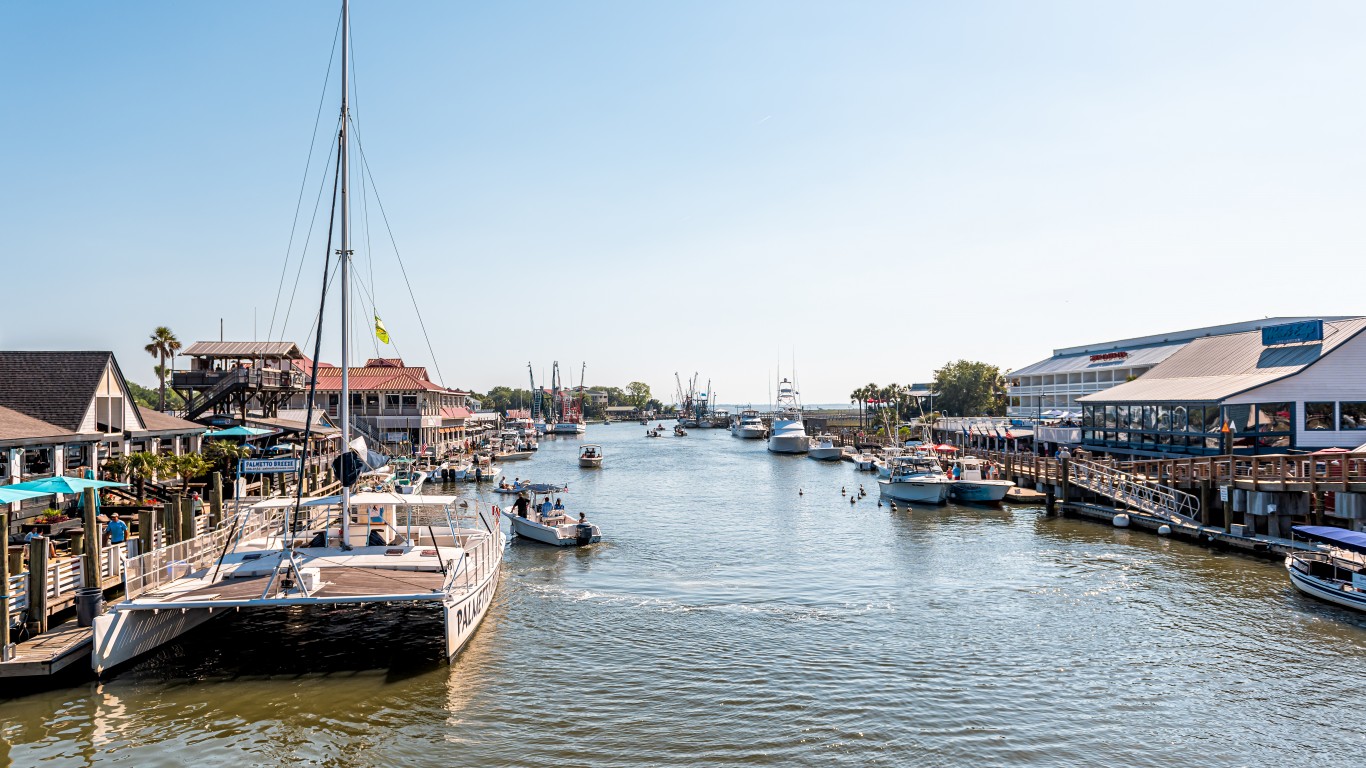
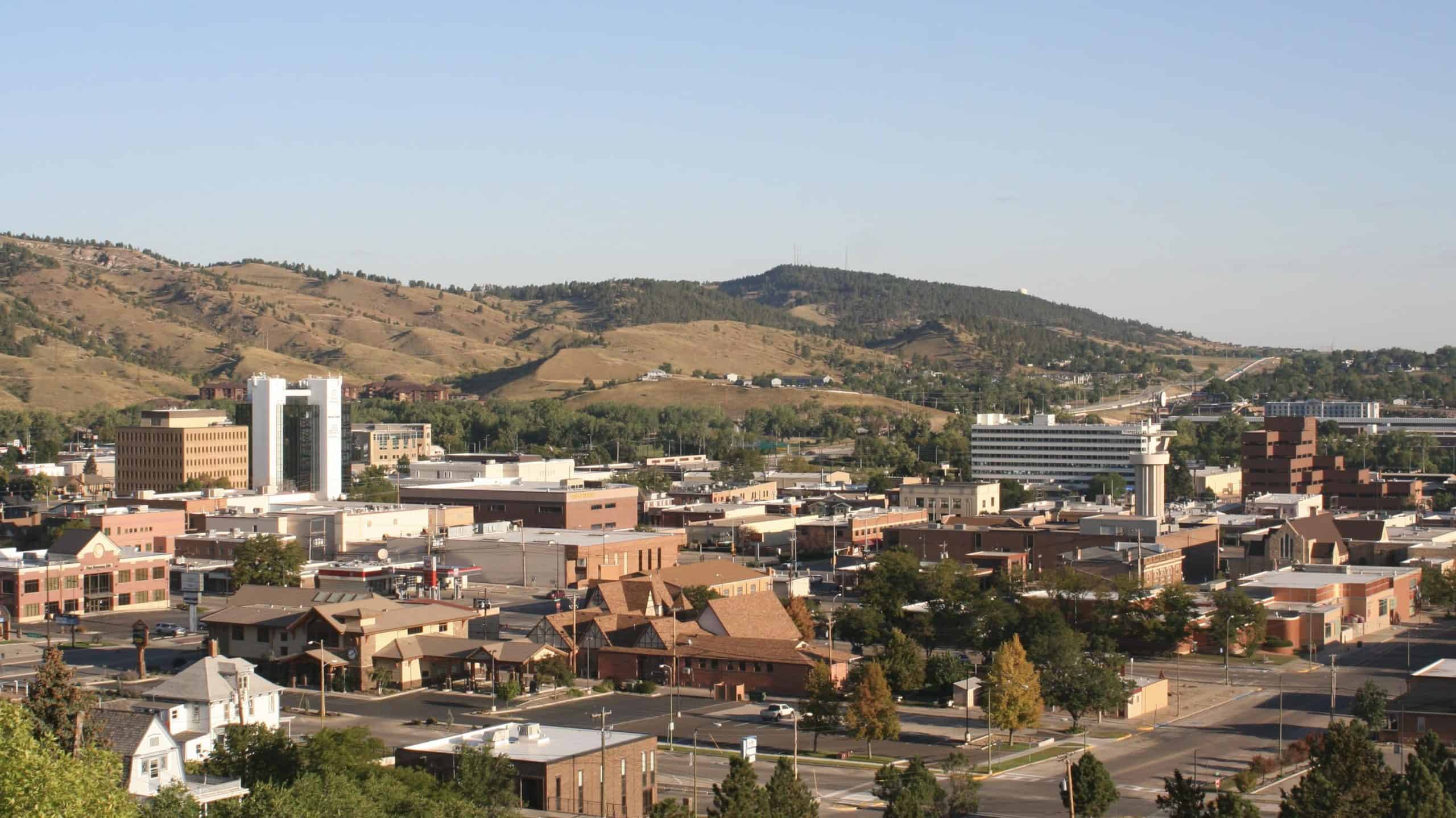
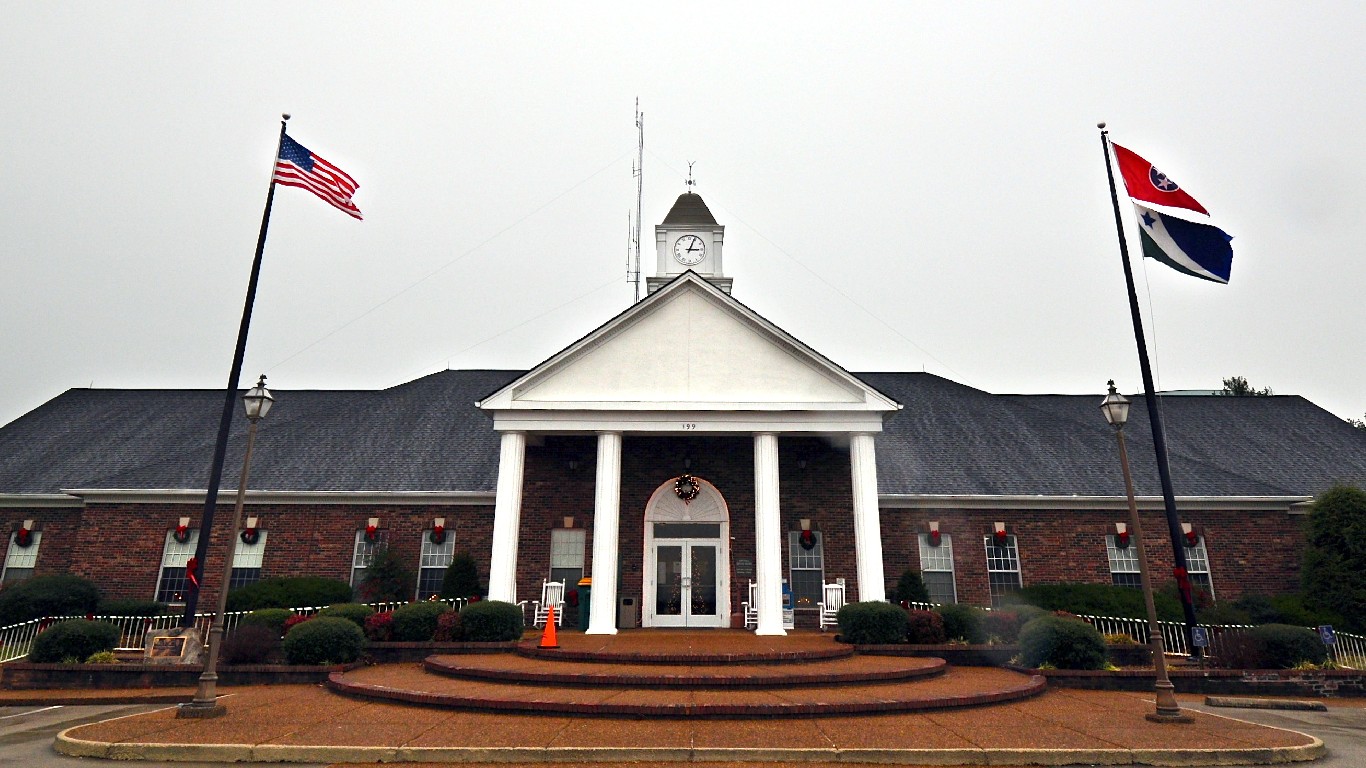
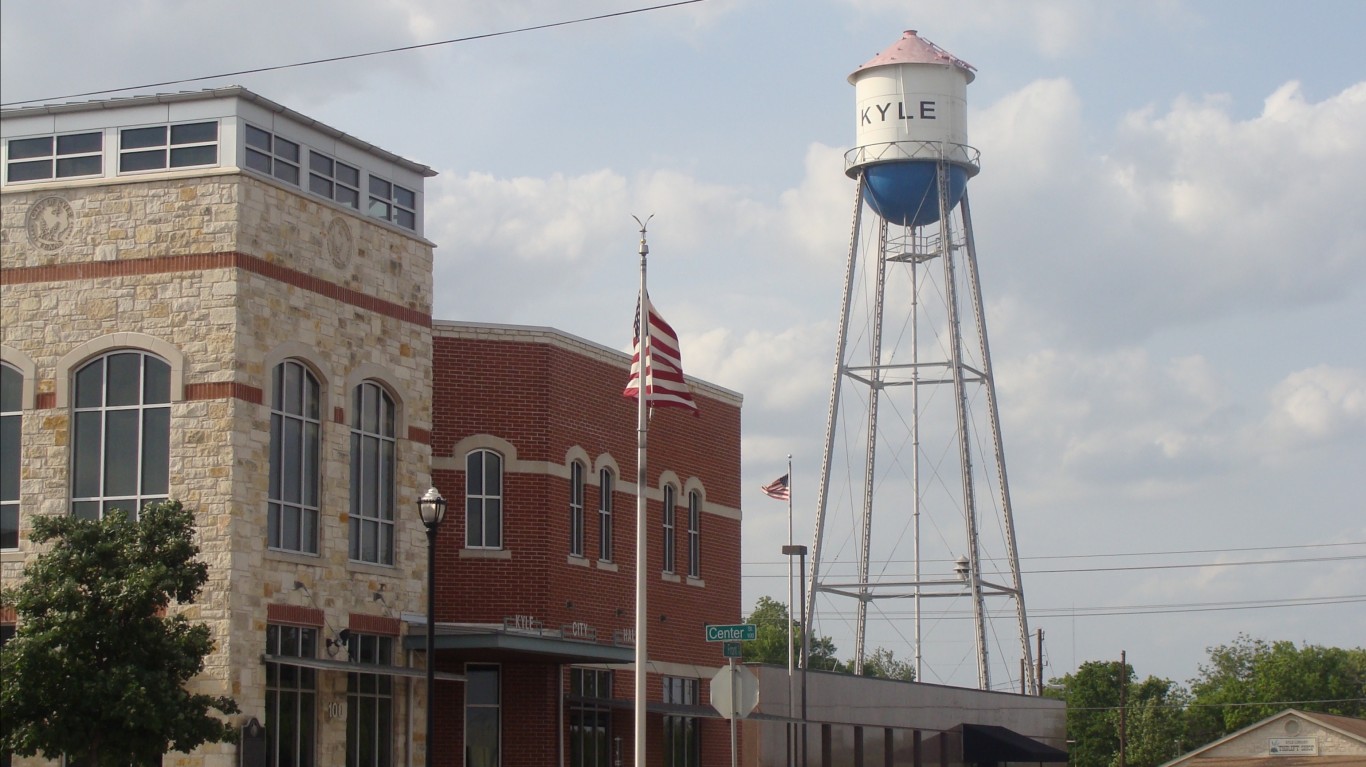
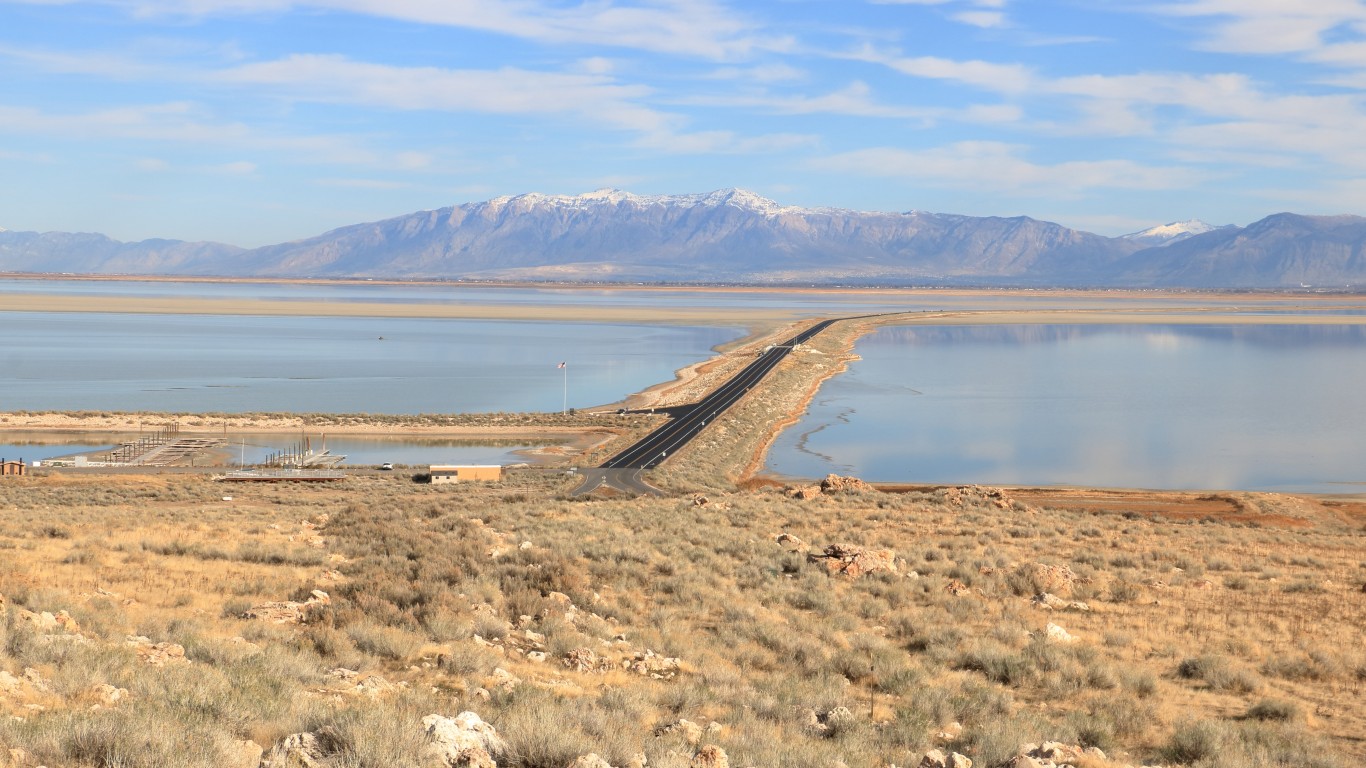
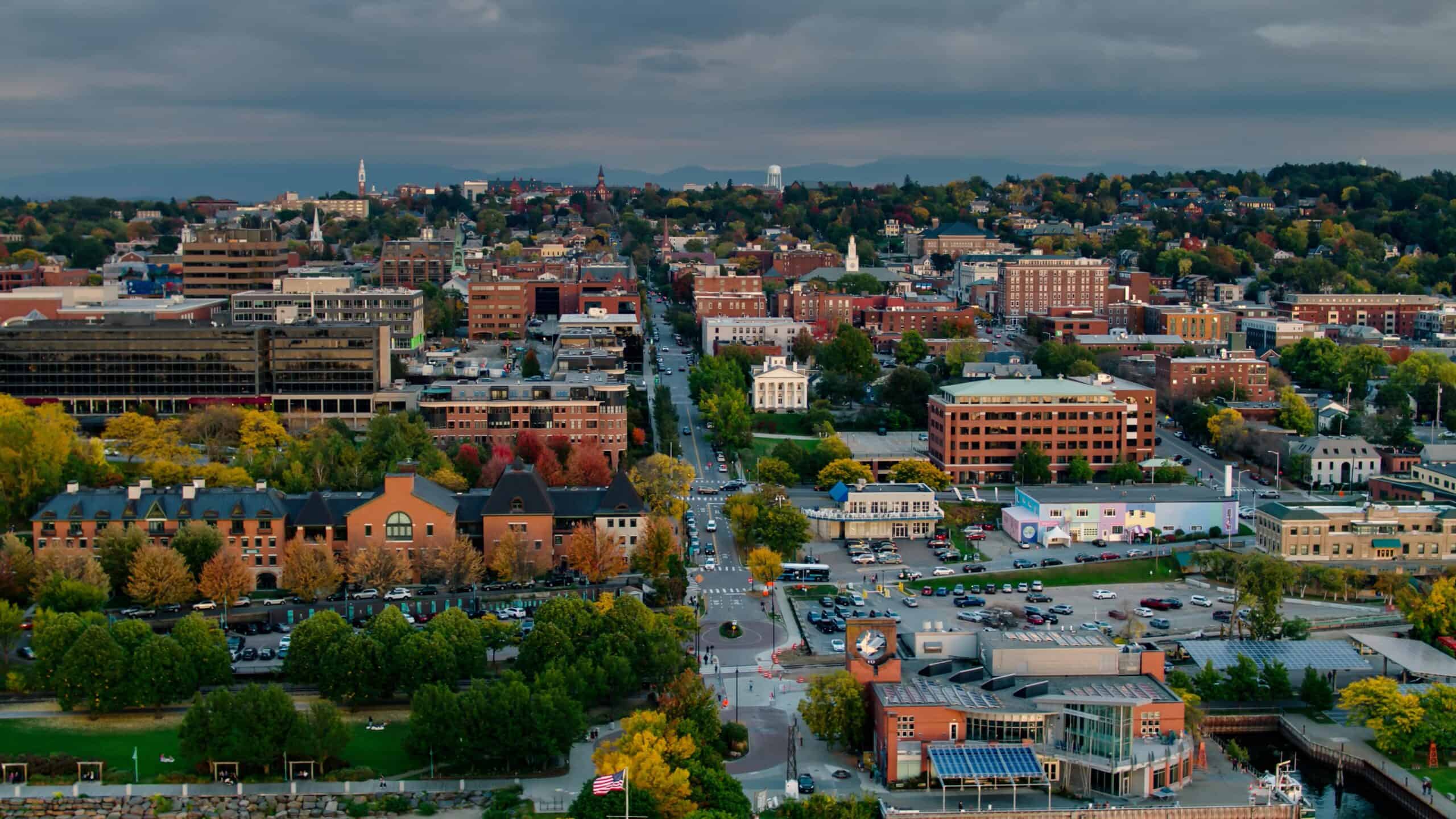
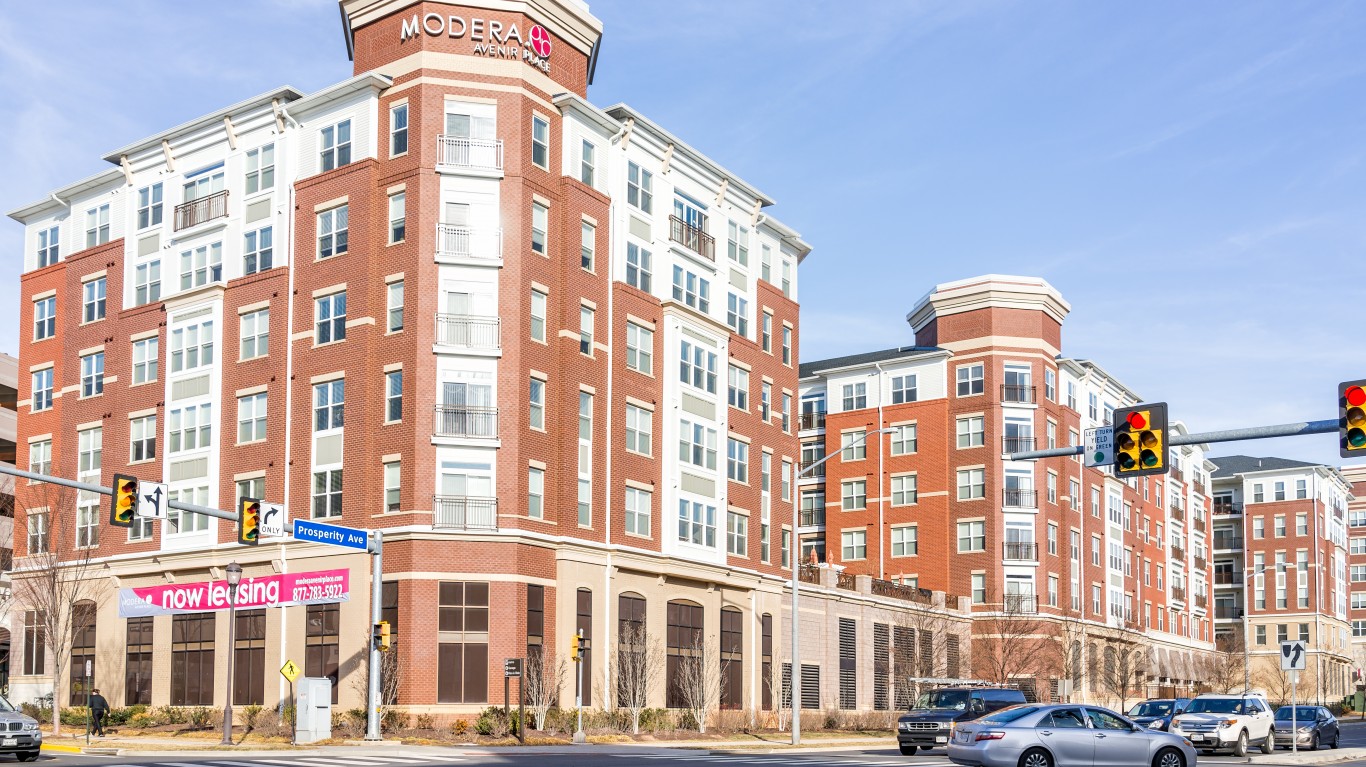
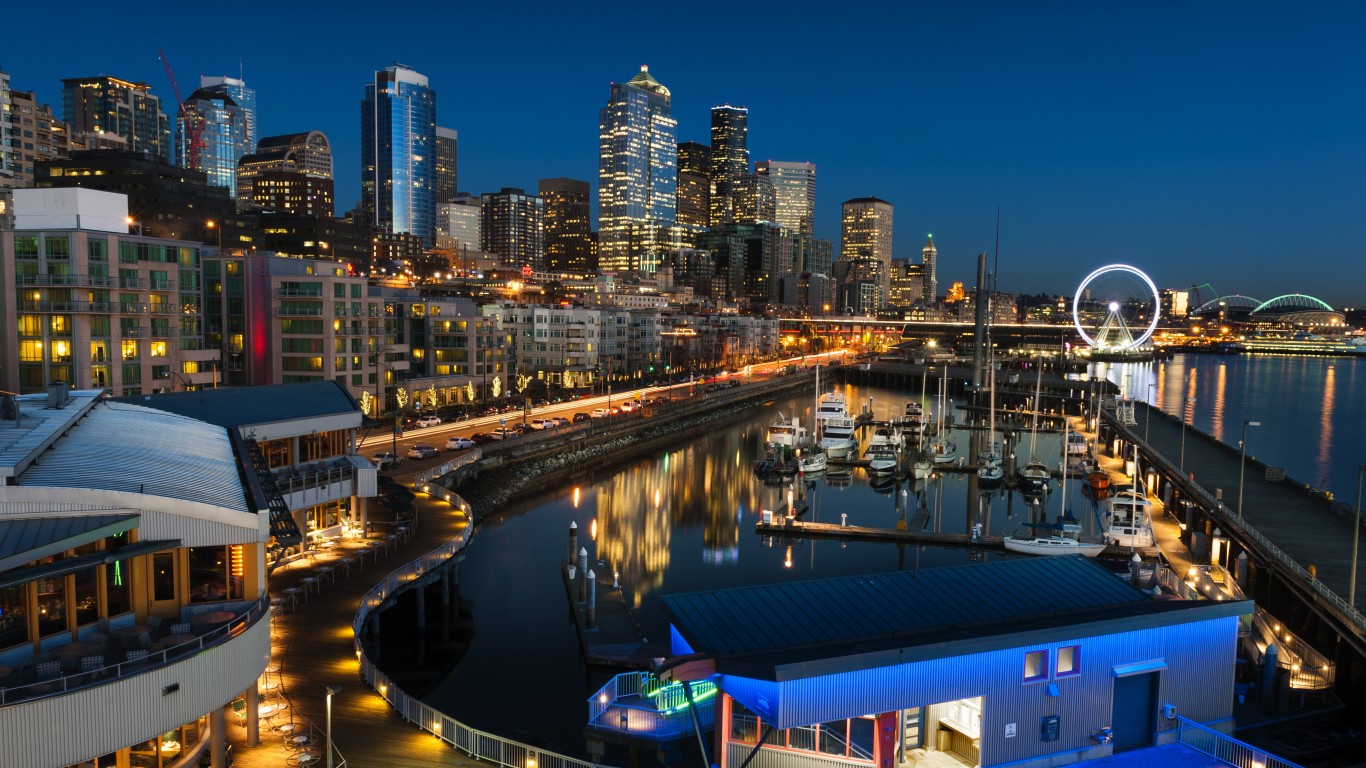
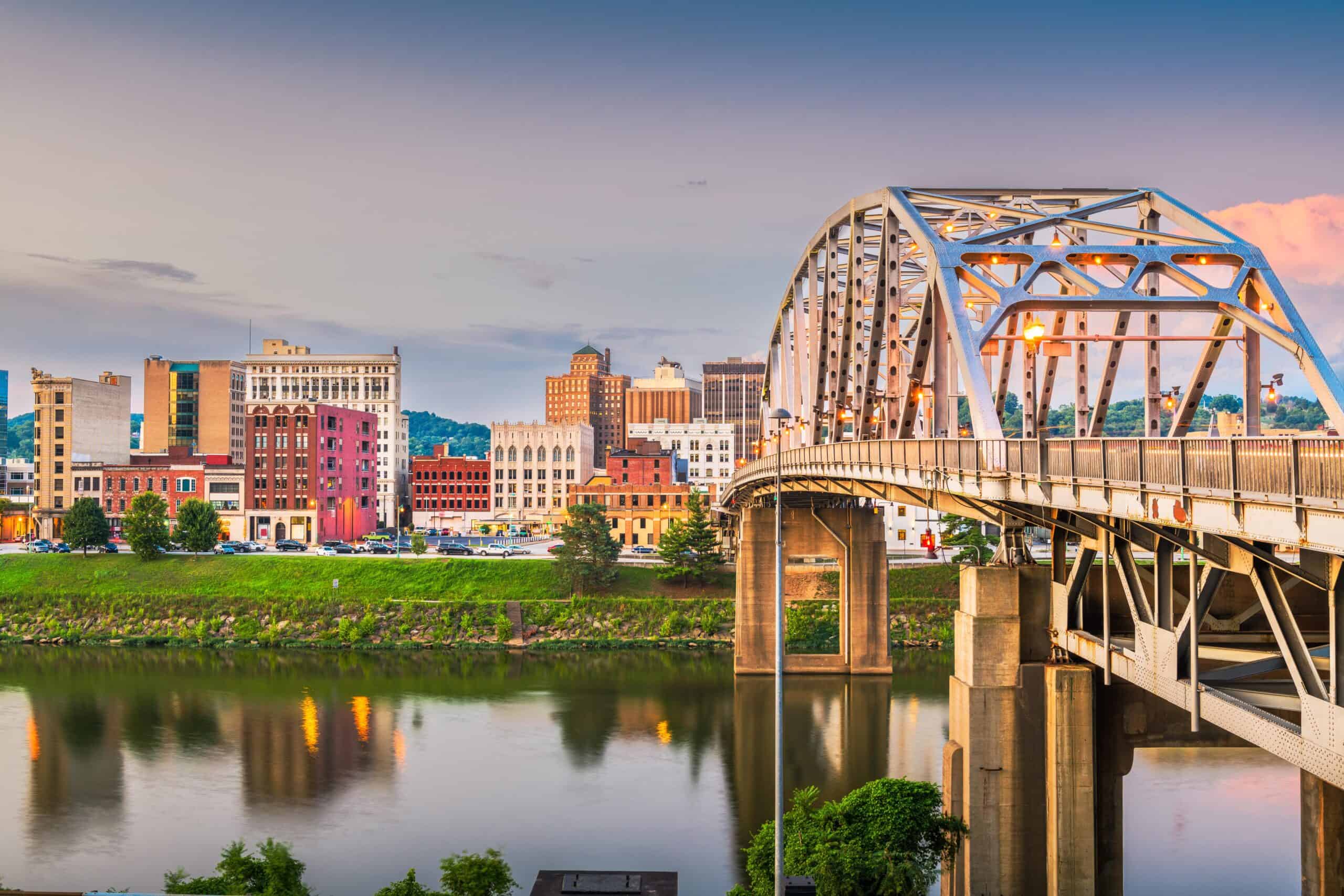
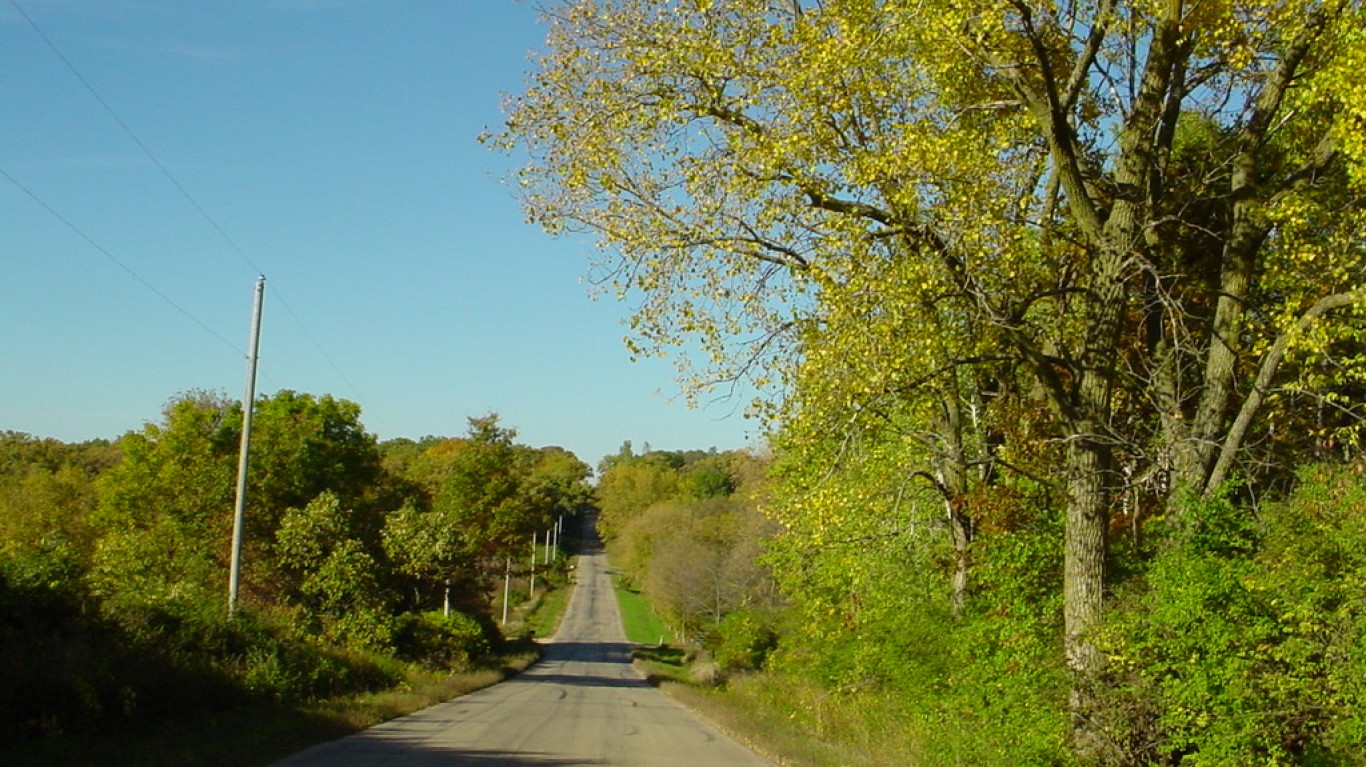
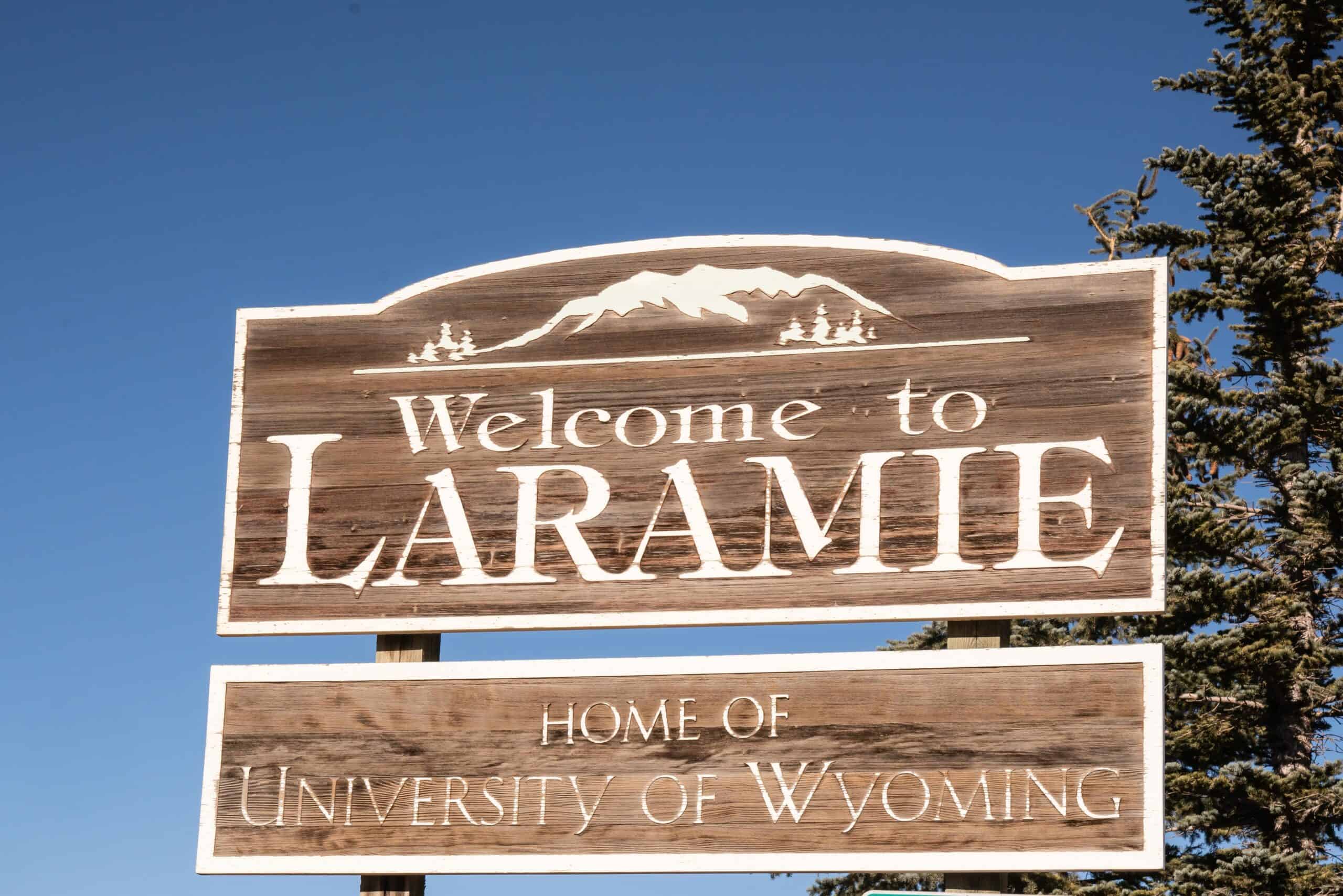








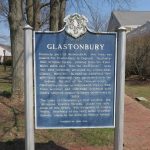

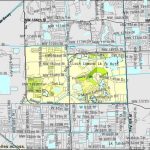


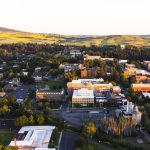




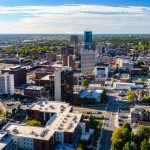
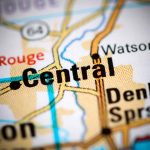















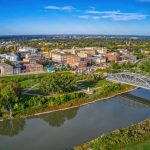






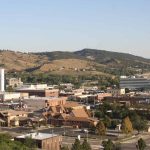



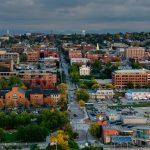


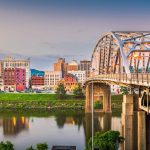


These American Cities Are Thriving, Some With Unemployment Rates Under Below 2%
Unemployment is one of the most important and closely watched economic indicators — and for good reason. Seen as a gauge for the strength of the country's job market, the official unemployment rate reflects the share of Americans aged 16 and older who are out of work, despite actively seeking a job. At the individual level, the adverse effects of unemployment can extend well beyond financial concerns. At the broader, macroeconomic level, high unemployment can trigger a cascade of negative consequences.
Key Points
- The strength of the U.S. economy is inextricably linked to the health of the American job market, and in recent years, economic growth has been fueled, in part, by historically low unemployment rates.
- Labor market conditions are influenced by a wide range of global, national, and local factors, however, and as a result, there are cities and towns across the country where jobless rates are lower than have ever been across the country as a whole.
Americans who are unemployed are at increased risk of eviction, and those out of work for at least six months are exposed to far greater than average risk of poverty. According to the U.S. Department of Health and Human Services, rates of depression, anxiety, and stress-related illnesses like stroke or heart attack are also far higher among the unemployed than they are among working Americans.
Unemployment also has implications for the economy at large, and at high enough levels, joblessness can negatively impact working Americans. In today's economy, a single percentage point increase in the unemployment rate represents the loss of nearly 1.7 million jobs. That means 1.7 million households with lost wages and 1.7 million fewer workers contributing to economic output. Reduced productivity and consumer spending have ripple effects throughout the economy, often leading to further workforce reductions and potentially fueling an economic contraction or prolonged recession.
Encouragingly, the U.S. job market has experienced a period of historic strength in recent years. After hitting 8.1% in 2020, the first year of the COVID-19 pandemic, the average annual unemployment rate fell to 5.3% in 2021. In both 2022 and 2023, the annual jobless rate hit its lowest level since the 1960s, at just 3.6%. (Here is a look at the U.S. presidents who oversaw the best job markets in American history.)
While the annual unemployment rate climbed again in 2024, at 4.0%, joblessness in the U.S. remains low by historical standards. But even though the American job market is relatively healthy, there are cities and towns across the country where unemployment rates are lower than they have ever been nationwide.
Using data from the Bureau of Labor Statistics, 24/7 Wall St. identified the best local job market in every state. Rankings are based on average unemployment rates in 2024. We considered each of the nearly 2,000 U.S. cities and towns with available data from the BLS' Local Area Unemployment Statistics program. It is important to note that in two states — Hawaii and Vermont — the LAUS covers only a single city. As a result, the listed city in these states ranks as the best local job market by default. Data on median household income are five-year average estimates from the U.S. Census Bureau's 2023 American Community Survey. All other supplemental data is from the LAUS.
Among the 50 cities and towns on this list, 2024 unemployment rates range from 4.2% to just 1.7%. In each of these places, the local jobless rate is anywhere from 0.1 to 2.7 percentage points lower than the comparable statewide unemployment rate.
Low unemployment typically indicates a greater number of wage earners, and, as a result, household incomes tend to be relatively high in these places. Of the 50 cities and towns on this list, 39 have a higher median household income than the state as a whole, often by tens of thousands of dollars. Higher household earnings can fuel consumer spending, which in turn can create employment opportunities and drive a virtuous economic cycle. (Here is a look at the 30 American jobs that may vanish in the next 10 years.)
These are the best local job markets in each state.
Why It Matters
Few economic indicators have greater implications for working Americans and the economy as a whole than the unemployment rate. Rising unemployment can drive downward economic spirals, while falling unemployment can mean a reduced likelihood of financial hardship for American households and more rapid national economic growth. The U.S. is currently in a period of historically low unemployment, and there are parts of the country where unemployment rates are below anything that has ever been reported nationwide.
Alabama: Pelham
- Average unemployment rate in 2024: 2.2% (3.1% in Alabama)
- Number of unemployed residents in 2024: 314
- Number of employed residents in 2024: 14,094
- Total labor force in 2024: 14,408
- Median household income: $91,904 ($62,027 in Alabama)
- Places considered in state: 28
Alaska: Sitka
- Average unemployment rate in 2024: 3.1% (4.6% in Alaska)
- Number of unemployed residents in 2024: 142
- Number of employed residents in 2024: 4,438
- Total labor force in 2024: 4,580
- Median household income: $101,207 ($89,336 in Alaska)
- Places considered in state: 5
Arizona: Queen Creek
- Average unemployment rate in 2024: 2.8% (3.6% in Arizona)
- Number of unemployed residents in 2024: 1,114
- Number of employed residents in 2024: 39,219
- Total labor force in 2024: 40,333
- Median household income: $134,719 ($76,872 in Arizona)
- Places considered in state: 32
Arkansas: Bentonville
- Average unemployment rate in 2024: 2.5% (3.5% in Arkansas)
- Number of unemployed residents in 2024: 825
- Number of employed residents in 2024: 32,829
- Total labor force in 2024: 33,654
- Median household income: $108,465 ($58,773 in Arkansas)
- Places considered in state: 20
California: Goleta
- Average unemployment rate in 2024: 2.9% (5.3% in California)
- Number of unemployed residents in 2024: 559
- Number of employed residents in 2024: 18,547
- Total labor force in 2024: 19,106
- Median household income: $118,039 ($96,334 in California)
- Places considered in state: 285
Colorado: Littleton
- Average unemployment rate in 2024: 3.9% (4.3% in Colorado)
- Number of unemployed residents in 2024: 1,026
- Number of employed residents in 2024: 25,601
- Total labor force in 2024: 26,627
- Median household income: $96,611 ($92,470 in Colorado)
- Places considered in state: 28
Connecticut: Glastonbury
- Average unemployment rate in 2024: 2.3% (3.2% in Connecticut)
- Number of unemployed residents in 2024: 438
- Number of employed residents in 2024: 18,919
- Total labor force in 2024: 19,357
- Median household income: $130,294 ($93,760 in Connecticut)
- Places considered in state: 45
Delaware: Middletown
- Average unemployment rate in 2024: 3.1% (3.7% in Delaware)
- Number of unemployed residents in 2024: 390
- Number of employed residents in 2024: 12,010
- Total labor force in 2024: 12,400
- Median household income: $115,252 ($82,855 in Delaware)
- Places considered in state: 4
Florida: Miami Lakes
- Average unemployment rate in 2024: 2.1% (3.4% in Florida)
- Number of unemployed residents in 2024: 384
- Number of employed residents in 2024: 18,263
- Total labor force in 2024: 18,647
- Median household income: $97,255 ($71,711 in Florida)
- Places considered in state: 103
Georgia: Brookhaven
- Average unemployment rate in 2024: 2.6% (3.5% in Georgia)
- Number of unemployed residents in 2024: 894
- Number of employed residents in 2024: 33,915
- Total labor force in 2024: 34,809
- Median household income: $117,448 ($74,664 in Georgia)
- Places considered in state: 45
Hawaii: Honolulu
- Average unemployment rate in 2024: 2.7% (3.0% in Hawaii)
- Number of unemployed residents in 2024: 12,790
- Number of employed residents in 2024: 458,164
- Total labor force in 2024: 470,954
- Median household income: $104,264 ($98,317 in Hawaii)
- Places considered in state: 1
Idaho: Moscow
- Average unemployment rate in 2024: 2.8% (3.7% in Idaho)
- Number of unemployed residents in 2024: 418
- Number of employed residents in 2024: 14,765
- Total labor force in 2024: 15,183
- Median household income: $56,497 ($74,636 in Idaho)
- Places considered in state: 14
Illinois: Edwardsville
- Average unemployment rate in 2024: 3.7% (5.0% in Illinois)
- Number of unemployed residents in 2024: 502
- Number of employed residents in 2024: 13,085
- Total labor force in 2024: 13,587
- Median household income: $92,671 ($81,702 in Illinois)
- Places considered in state: 103
Indiana: Zionsville
- Average unemployment rate in 2024: 3.2% (4.2% in Indiana)
- Number of unemployed residents in 2024: 550
- Number of employed residents in 2024: 16,493
- Total labor force in 2024: 17,043
- Median household income: $159,126 ($70,051 in Indiana)
- Places considered in state: 41
Iowa: Iowa City
- Average unemployment rate in 2024: 2.3% (3.0% in Iowa)
- Number of unemployed residents in 2024: 981
- Number of employed residents in 2024: 42,468
- Total labor force in 2024: 43,449
- Median household income: $57,533 ($73,147 in Iowa)
- Places considered in state: 22
Kansas: Garden City
- Average unemployment rate in 2024: 2.8% (3.6% in Kansas)
- Number of unemployed residents in 2024: 442
- Number of employed residents in 2024: 15,262
- Total labor force in 2024: 15,704
- Median household income: $72,511 ($72,639 in Kansas)
- Places considered in state: 19
Kentucky: Lexington-Fayette
- Average unemployment rate in 2024: 4.2% (5.1% in Kentucky)
- Number of unemployed residents in 2024: 7,373
- Number of employed residents in 2024: 168,371
- Total labor force in 2024: 175,744
- Median household income: $67,631 ($62,417 in Kentucky)
- Places considered in state: 17
Louisiana: Central
- Average unemployment rate in 2024: 3.6% (4.4% in Louisiana)
- Number of unemployed residents in 2024: 532
- Number of employed residents in 2024: 14,435
- Total labor force in 2024: 14,967
- Median household income: $90,091 ($60,023 in Louisiana)
- Places considered in state: 13
Maine: South Portland
- Average unemployment rate in 2024: 2.5% (3.1% in Maine)
- Number of unemployed residents in 2024: 412
- Number of employed residents in 2024: 16,284
- Total labor force in 2024: 16,696
- Median household income: $84,563 ($71,773 in Maine)
- Places considered in state: 4
Maryland: Annapolis
- Average unemployment rate in 2024: 2.5% (3.0% in Maryland)
- Number of unemployed residents in 2024: 565
- Number of employed residents in 2024: 21,664
- Total labor force in 2024: 22,229
- Median household income: $104,257 ($101,652 in Maryland)
- Places considered in state: 10
Massachusetts: Brookline
- Average unemployment rate in 2024: 2.7% (4.0% in Massachusetts)
- Number of unemployed residents in 2024: 1,050
- Number of employed residents in 2024: 37,820
- Total labor force in 2024: 38,870
- Median household income: $140,631 ($101,341 in Massachusetts)
- Places considered in state: 80
Michigan: Northville Township
- Average unemployment rate in 2024: 2.0% (4.7% in Michigan)
- Number of unemployed residents in 2024: 334
- Number of employed residents in 2024: 16,469
- Total labor force in 2024: 16,803
- Median household income: $141,816 ($71,149 in Michigan)
- Places considered in state: 88
Minnesota: Moorhead
- Average unemployment rate in 2024: 2.3% (3.0% in Minnesota)
- Number of unemployed residents in 2024: 562
- Number of employed residents in 2024: 24,233
- Total labor force in 2024: 24,795
- Median household income: $69,371 ($87,556 in Minnesota)
- Places considered in state: 45
Mississippi: Pearl
- Average unemployment rate in 2024: 2.1% (3.2% in Mississippi)
- Number of unemployed residents in 2024: 329
- Number of employed residents in 2024: 15,110
- Total labor force in 2024: 15,439
- Median household income: $54,643 ($54,915 in Mississippi)
- Places considered in state: 19
Missouri: O'Fallon
- Average unemployment rate in 2024: 2.8% (3.7% in Missouri)
- Number of unemployed residents in 2024: 1,514
- Number of employed residents in 2024: 53,530
- Total labor force in 2024: 55,044
- Median household income: $107,203 ($68,920 in Missouri)
- Places considered in state: 30
Montana: Bozeman
- Average unemployment rate in 2024: 2.2% (3.0% in Montana)
- Number of unemployed residents in 2024: 826
- Number of employed residents in 2024: 37,038
- Total labor force in 2024: 37,864
- Median household income: $79,903 ($69,922 in Montana)
- Places considered in state: 8
Nebraska: Kearney
- Average unemployment rate in 2024: 2.3% (2.8% in Nebraska)
- Number of unemployed residents in 2024: 447
- Number of employed residents in 2024: 19,362
- Total labor force in 2024: 19,809
- Median household income: $69,790 ($74,985 in Nebraska)
- Places considered in state: 8
Nevada: Reno
- Average unemployment rate in 2024: 4.6% (5.6% in Nevada)
- Number of unemployed residents in 2024: 7,081
- Number of employed residents in 2024: 145,301
- Total labor force in 2024: 152,382
- Median household income: $78,448 ($75,561 in Nevada)
- Places considered in state: 6
New Hampshire: Dover
- Average unemployment rate in 2024: 2.0% (2.6% in New Hampshire)
- Number of unemployed residents in 2024: 407
- Number of employed residents in 2024: 20,258
- Total labor force in 2024: 20,665
- Median household income: $92,748 ($95,628 in New Hampshire)
- Places considered in state: 10
New Jersey: Hoboken
- Average unemployment rate in 2024: 2.7% (4.5% in New Jersey)
- Number of unemployed residents in 2024: 1,120
- Number of employed residents in 2024: 40,668
- Total labor force in 2024: 41,788
- Median household income: $176,943 ($101,050 in New Jersey)
- Places considered in state: 108
New Mexico: Carlsbad
- Average unemployment rate in 2024: 3.3% (4.1% in New Mexico)
- Number of unemployed residents in 2024: 544
- Number of employed residents in 2024: 15,990
- Total labor force in 2024: 16,534
- Median household income: $78,277 ($62,125 in New Mexico)
- Places considered in state: 10
New York: Clifton Park
- Average unemployment rate in 2024: 2.6% (4.3% in New York)
- Number of unemployed residents in 2024: 524
- Number of employed residents in 2024: 19,434
- Total labor force in 2024: 19,958
- Median household income: $130,435 ($84,578 in New York)
- Places considered in state: 107
North Carolina: Morrisville
- Average unemployment rate in 2024: 2.7% (3.6% in North Carolina)
- Number of unemployed residents in 2024: 521
- Number of employed residents in 2024: 19,081
- Total labor force in 2024: 19,602
- Median household income: $125,404 ($69,904 in North Carolina)
- Places considered in state: 44
North Dakota: Grand Forks
- Average unemployment rate in 2024: 2.1% (2.4% in North Dakota)
- Number of unemployed residents in 2024: 712
- Number of employed residents in 2024: 33,293
- Total labor force in 2024: 34,005
- Median household income: $63,838 ($75,949 in North Dakota)
- Places considered in state: 7
Ohio: Avon
- Average unemployment rate in 2024: 3.0% (4.3% in Ohio)
- Number of unemployed residents in 2024: 399
- Number of employed residents in 2024: 12,923
- Total labor force in 2024: 13,322
- Median household income: $126,618 ($69,680 in Ohio)
- Places considered in state: 71
Oklahoma: Owasso
- Average unemployment rate in 2024: 2.8% (3.3% in Oklahoma)
- Number of unemployed residents in 2024: 616
- Number of employed residents in 2024: 21,335
- Total labor force in 2024: 21,951
- Median household income: $79,386 ($63,603 in Oklahoma)
- Places considered in state: 20
Oregon: Newberg
- Average unemployment rate in 2024: 3.5% (4.2% in Oregon)
- Number of unemployed residents in 2024: 533
- Number of employed residents in 2024: 14,826
- Total labor force in 2024: 15,359
- Median household income: $91,389 ($80,426 in Oregon)
- Places considered in state: 25
Pennsylvania: Derry Township (Dauphin County)
- Average unemployment rate in 2024: 2.0% (3.6% in Pennsylvania)
- Number of unemployed residents in 2024: 276
- Number of employed residents in 2024: 13,200
- Total labor force in 2024: 13,476
- Median household income: $93,564 ($76,081 in Pennsylvania)
- Places considered in state: 73
Rhode Island: North Kingstown
- Average unemployment rate in 2024: 3.3% (4.3% in Rhode Island)
- Number of unemployed residents in 2024: 521
- Number of employed residents in 2024: 15,071
- Total labor force in 2024: 15,592
- Median household income: $120,565 ($86,372 in Rhode Island)
- Places considered in state: 14
South Carolina: Mount Pleasant
- Average unemployment rate in 2024: 3.1% (4.1% in South Carolina)
- Number of unemployed residents in 2024: 1,589
- Number of employed residents in 2024: 50,239
- Total labor force in 2024: 51,828
- Median household income: $121,364 ($66,818 in South Carolina)
- Places considered in state: 24
South Dakota: Rapid City
- Average unemployment rate in 2024: 1.7% (1.8% in South Dakota)
- Number of unemployed residents in 2024: 700
- Number of employed residents in 2024: 40,014
- Total labor force in 2024: 40,714
- Median household income: $65,712 ($72,421 in South Dakota)
- Places considered in state: 3
Tennessee: Spring Hill
- Average unemployment rate in 2024: 2.6% (3.4% in Tennessee)
- Number of unemployed residents in 2024: 837
- Number of employed residents in 2024: 31,285
- Total labor force in 2024: 32,122
- Median household income: $106,658 ($67,097 in Tennessee)
- Places considered in state: 30
Texas: Kyle
- Average unemployment rate in 2024: 2.9% (4.1% in Texas)
- Number of unemployed residents in 2024: 1,092
- Number of employed residents in 2024: 36,190
- Total labor force in 2024: 37,282
- Median household income: $89,645 ($76,292 in Texas)
- Places considered in state: 130
Utah: Syracuse
- Average unemployment rate in 2024: 2.5% (3.2% in Utah)
- Number of unemployed residents in 2024: 499
- Number of employed residents in 2024: 19,612
- Total labor force in 2024: 20,111
- Median household income: $132,459 ($91,750 in Utah)
- Places considered in state: 39
Vermont: Burlington
- Average unemployment rate in 2024: 2.0% (2.3% in Vermont)
- Number of unemployed residents in 2024: 522
- Number of employed residents in 2024: 25,179
- Total labor force in 2024: 25,701
- Median household income: $68,854 ($78,024 in Vermont)
- Places considered in state: 1
Virginia: Fairfax
- Average unemployment rate in 2024: 2.4% (2.9% in Virginia)
- Number of unemployed residents in 2024: 341
- Number of employed residents in 2024: 14,030
- Total labor force in 2024: 14,371
- Median household income: $132,774 ($90,974 in Virginia)
- Places considered in state: 40
Washington: Redmond
- Average unemployment rate in 2024: 3.4% (4.5% in Washington)
- Number of unemployed residents in 2024: 1,630
- Number of employed residents in 2024: 46,733
- Total labor force in 2024: 48,363
- Median household income: $162,099 ($94,952 in Washington)
- Places considered in state: 46
West Virginia: Charleston
- Average unemployment rate in 2024: 3.6% (4.1% in West Virginia)
- Number of unemployed residents in 2024: 820
- Number of employed residents in 2024: 22,170
- Total labor force in 2024: 22,990
- Median household income: $64,512 ($57,917 in West Virginia)
- Places considered in state: 5
Wisconsin: Fitchburg
- Average unemployment rate in 2024: 2.2% (3.0% in Wisconsin)
- Number of unemployed residents in 2024: 448
- Number of employed residents in 2024: 19,892
- Total labor force in 2024: 20,340
- Median household income: $85,420 ($75,670 in Wisconsin)
- Places considered in state: 35
Wyoming: Laramie
- Average unemployment rate in 2024: 2.7% (3.2% in Wyoming)
- Number of unemployed residents in 2024: 526
- Number of employed residents in 2024: 19,126
- Total labor force in 2024: 19,652
- Median household income: $52,414 ($74,815 in Wyoming)
- Places considered in state: 4
The image featured at the top of this post is ©Ground Picture / Shutterstock.com – License / Original